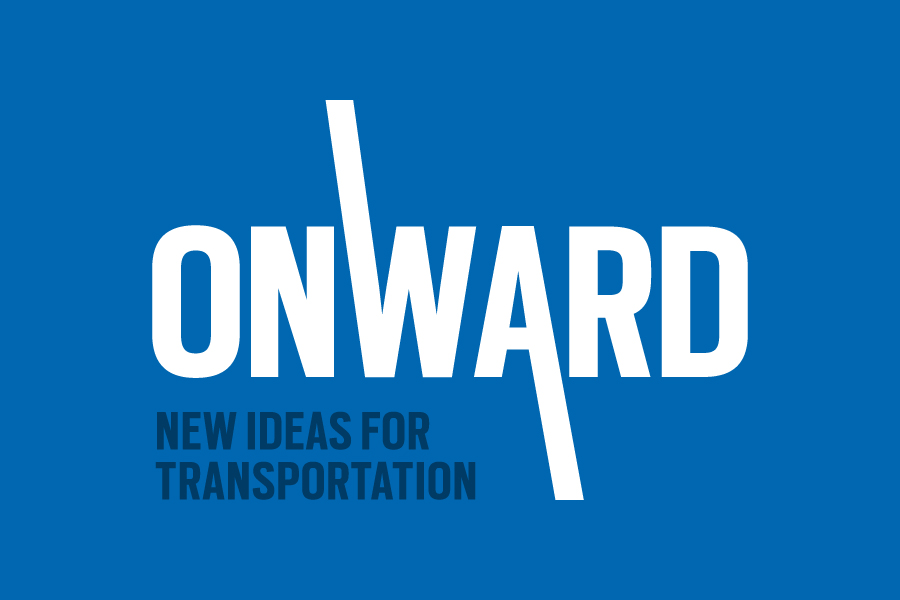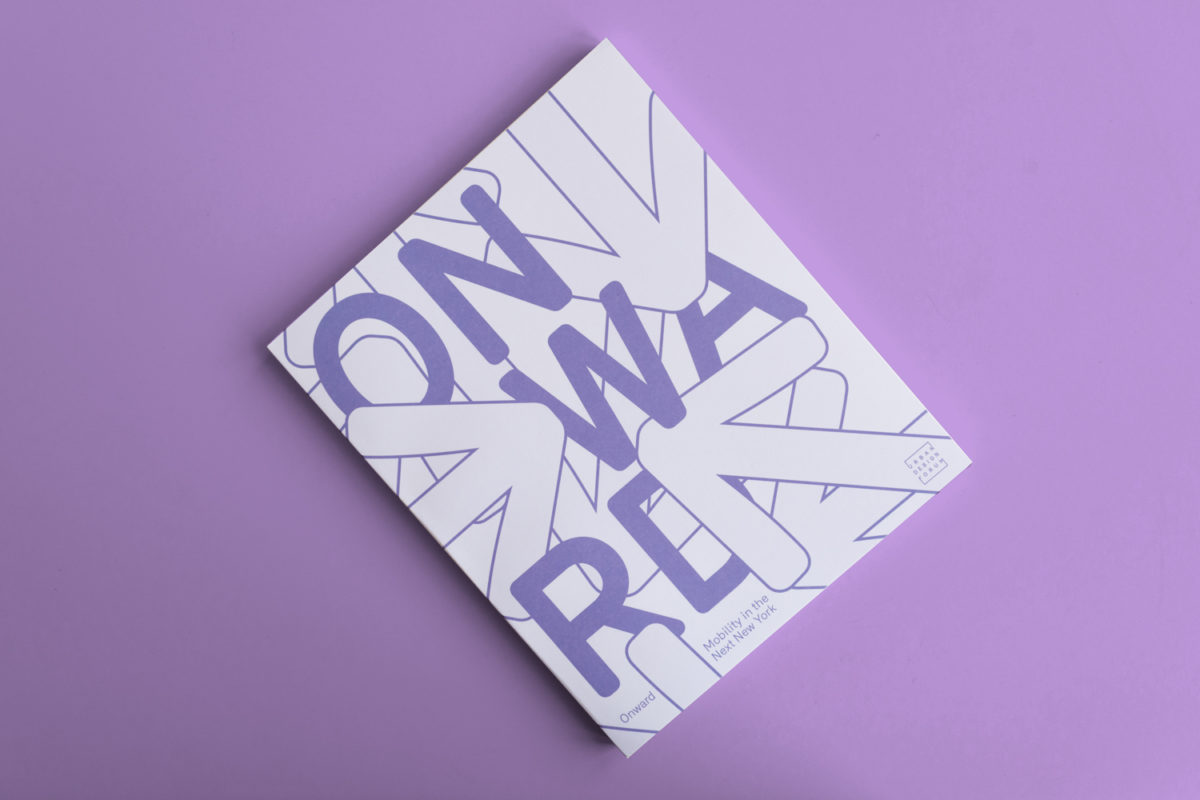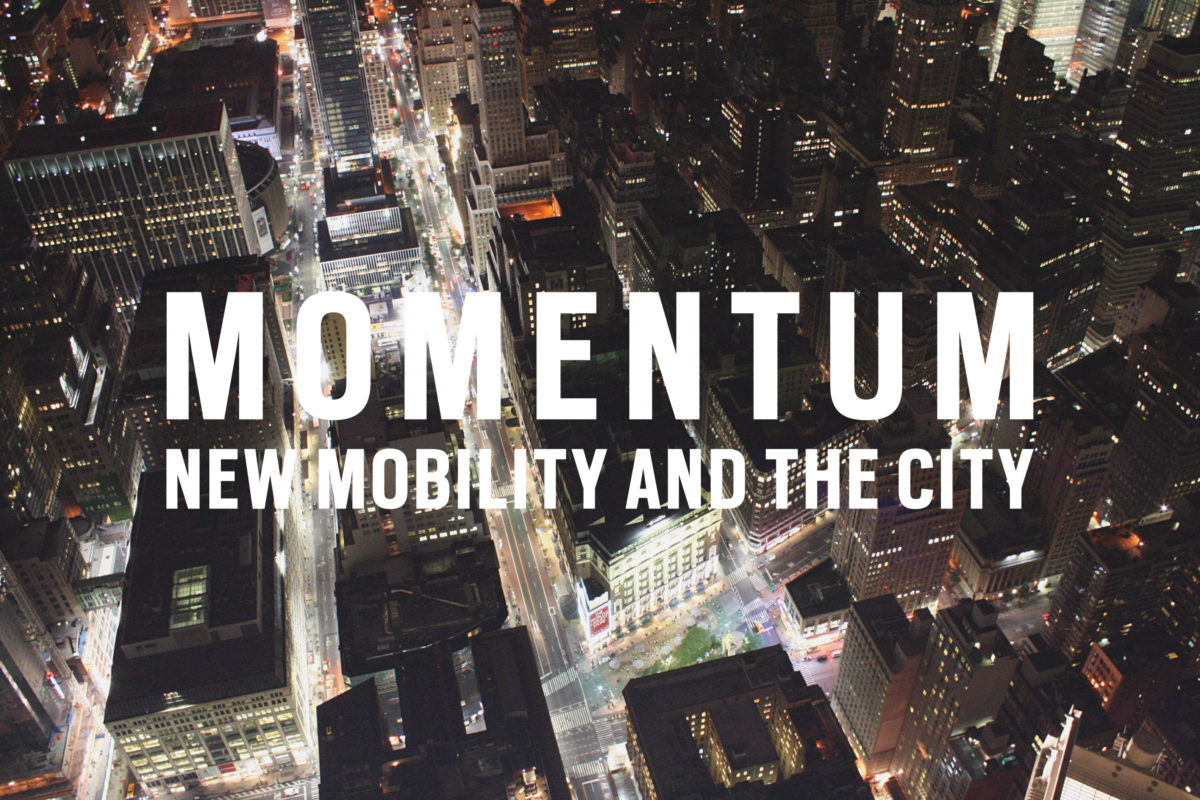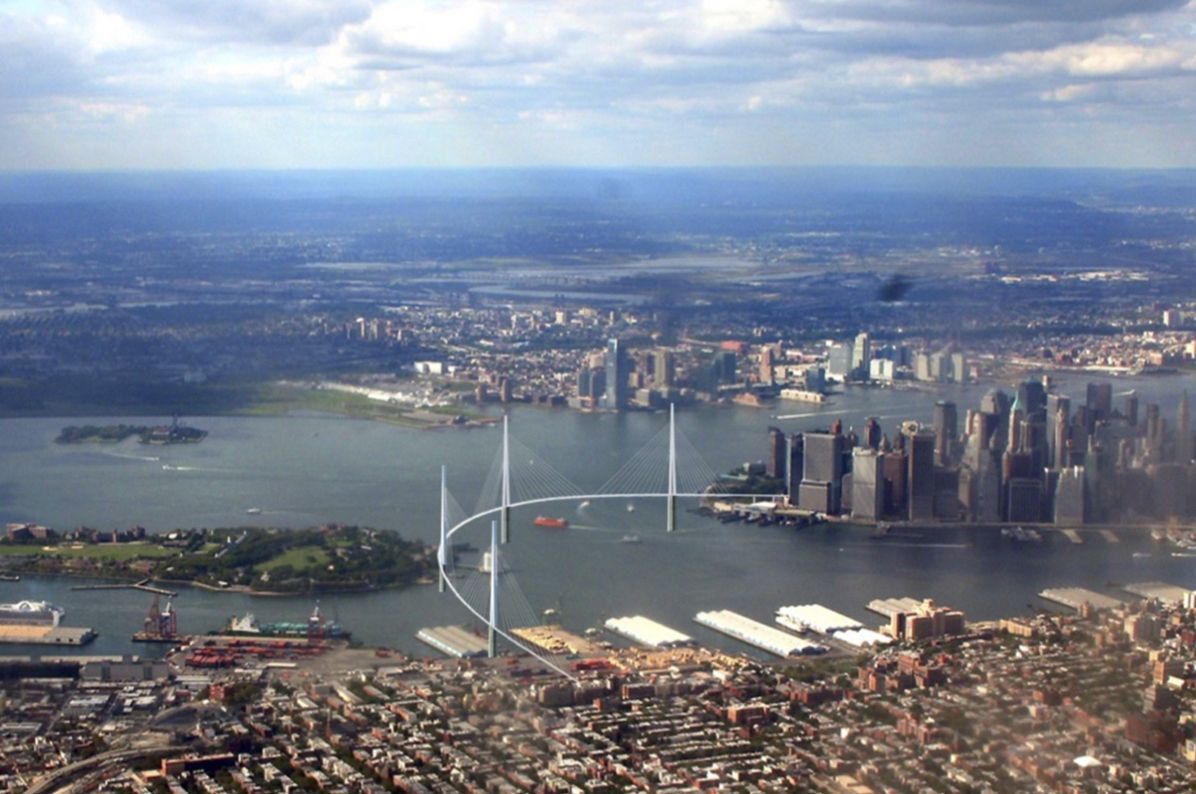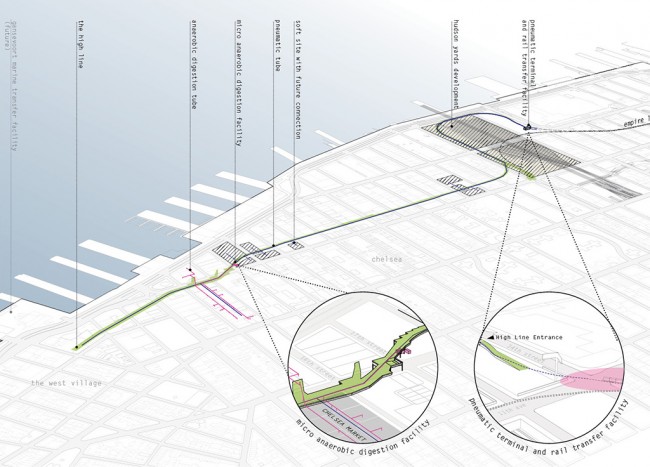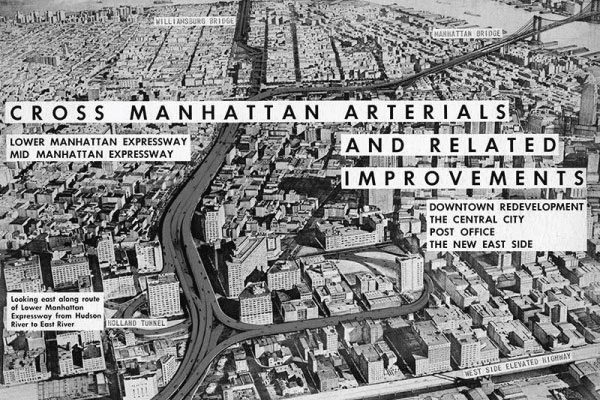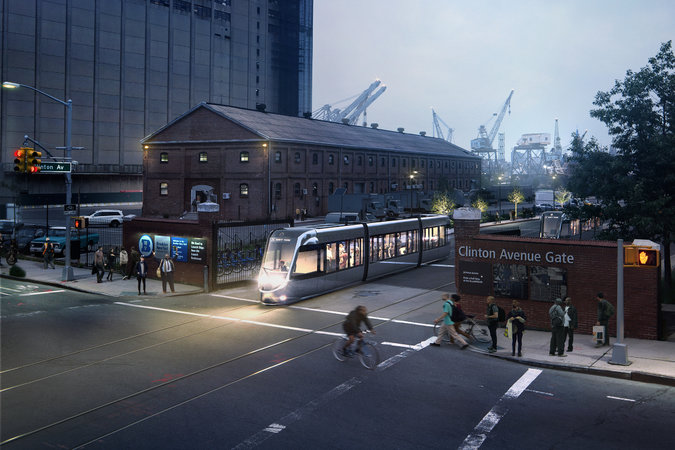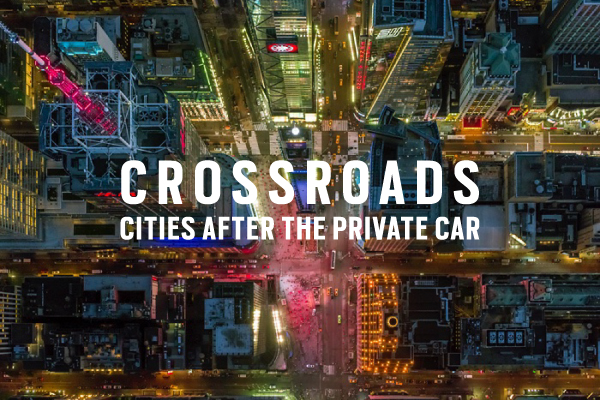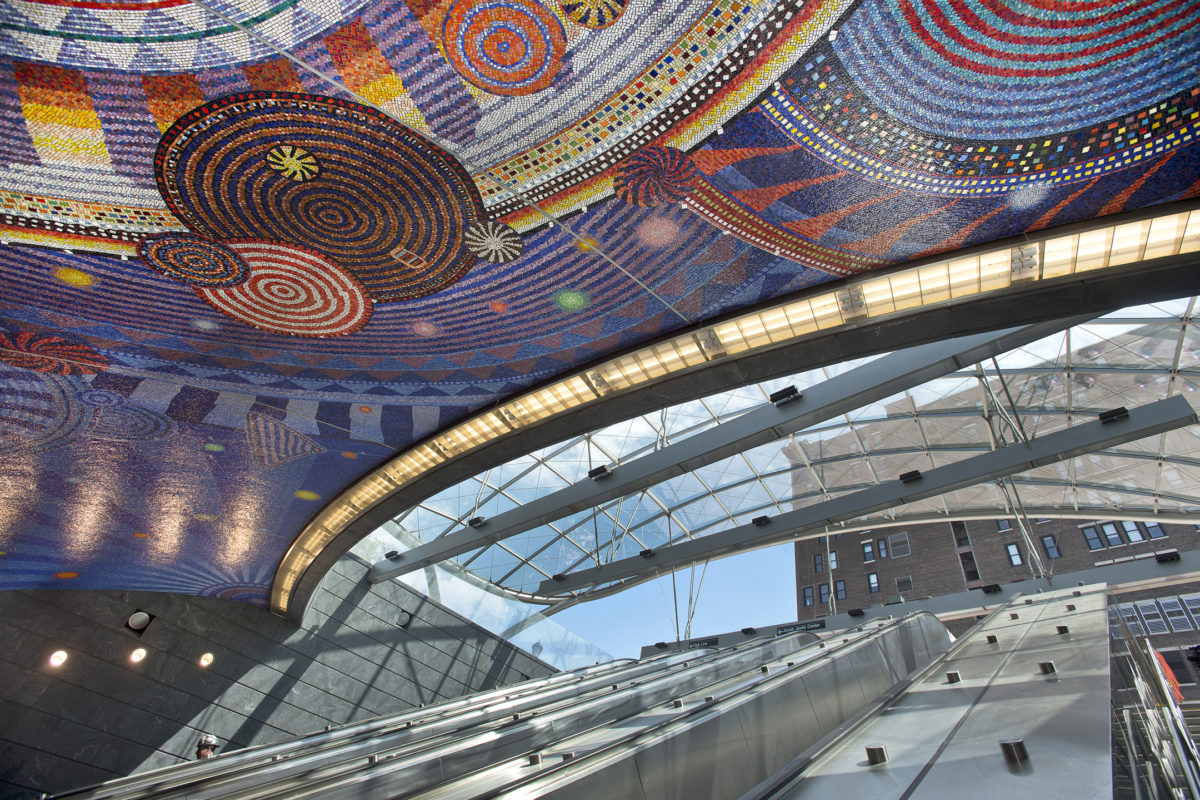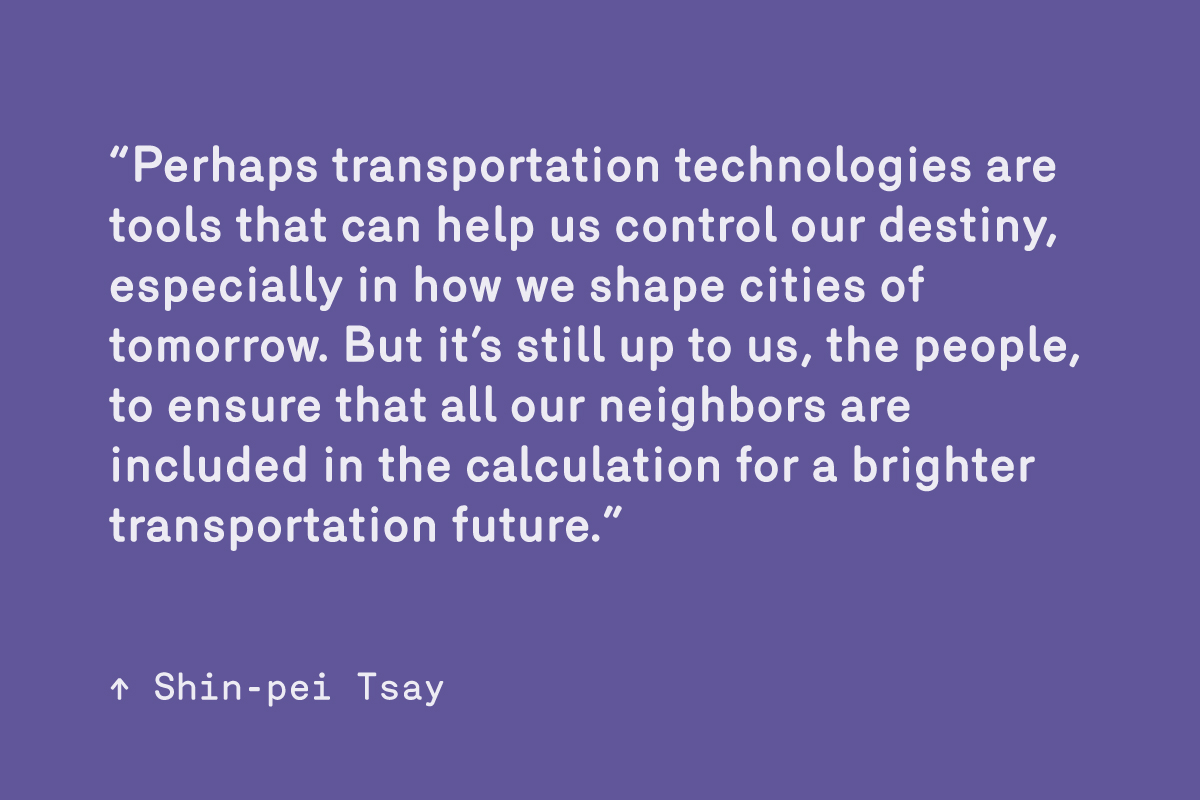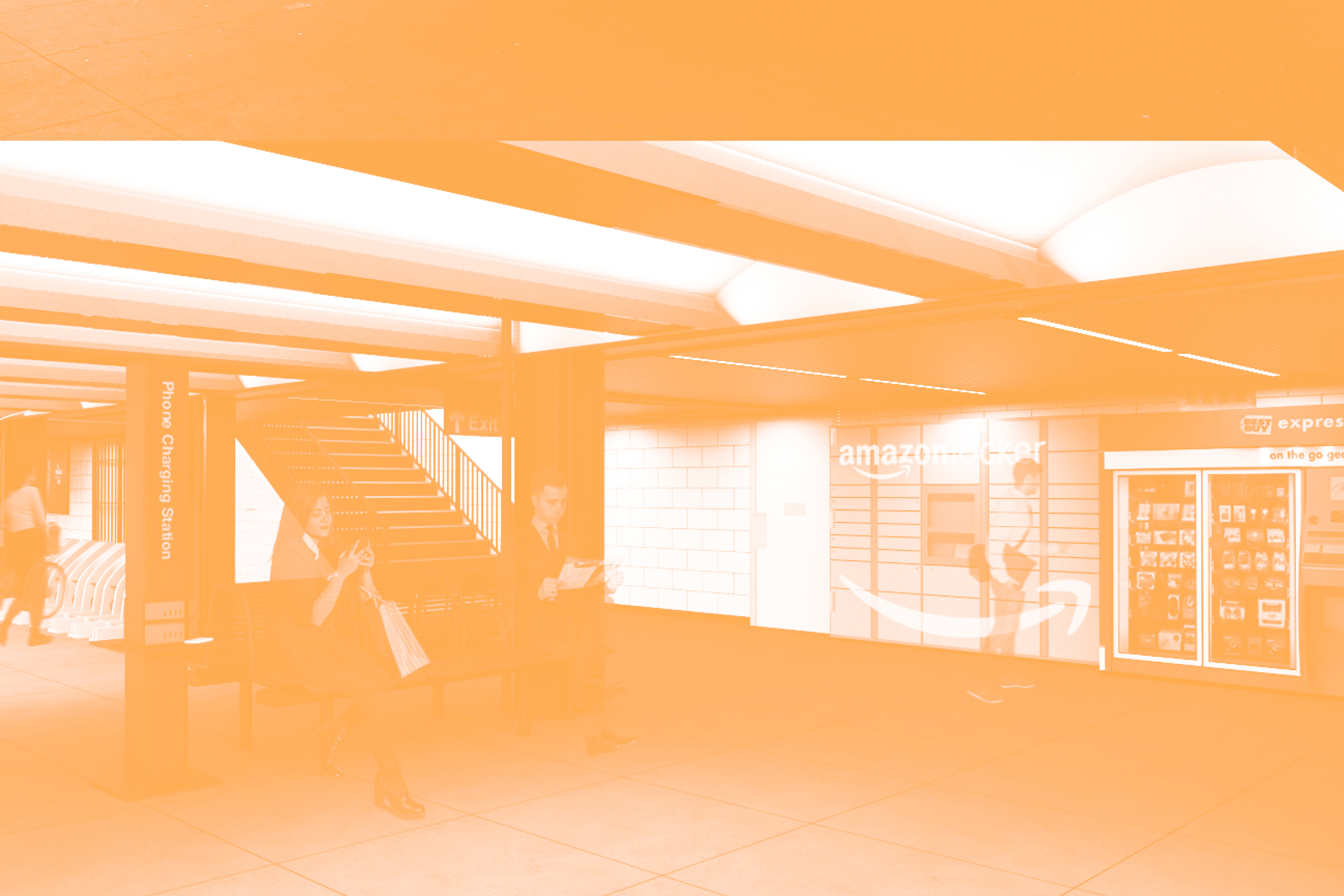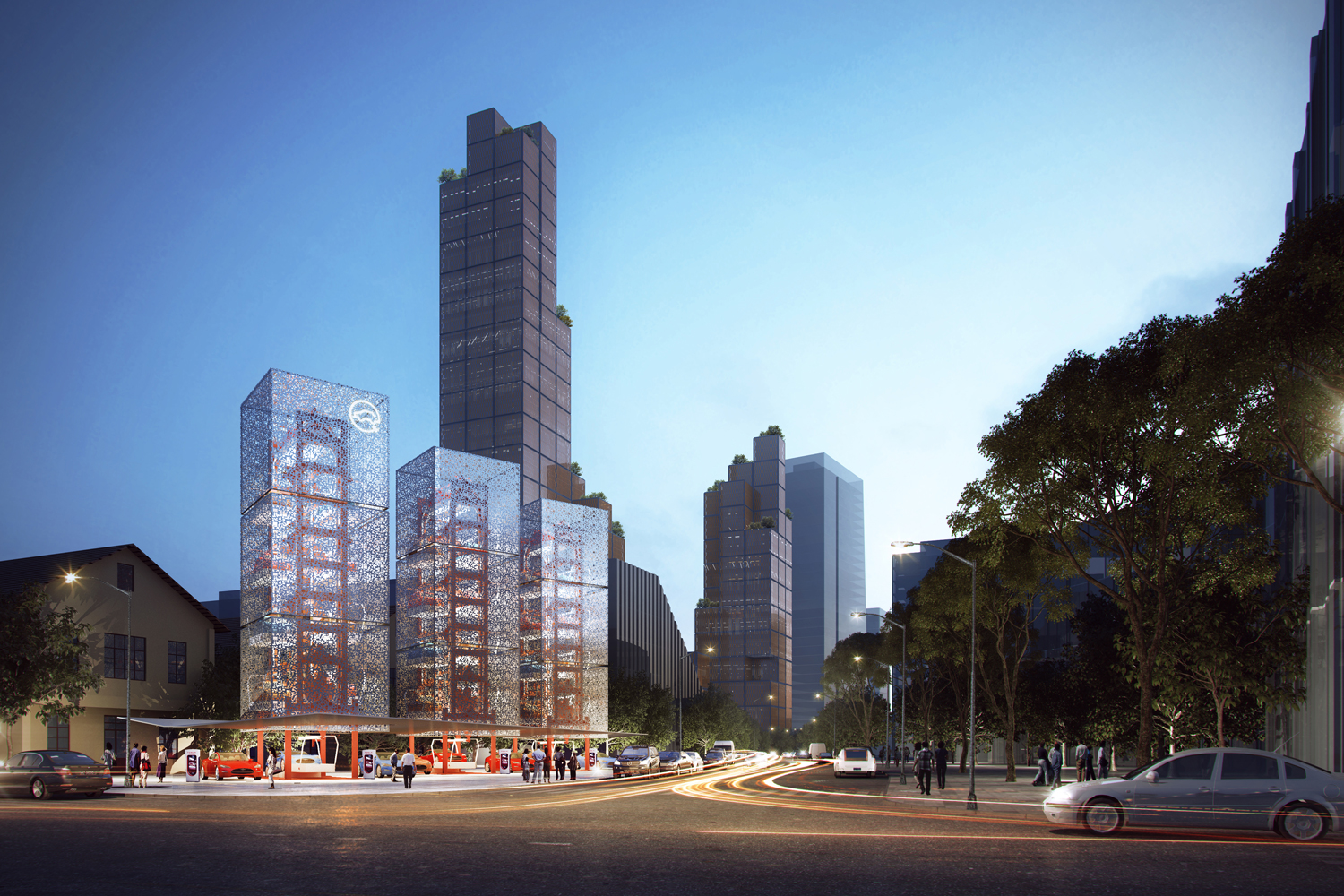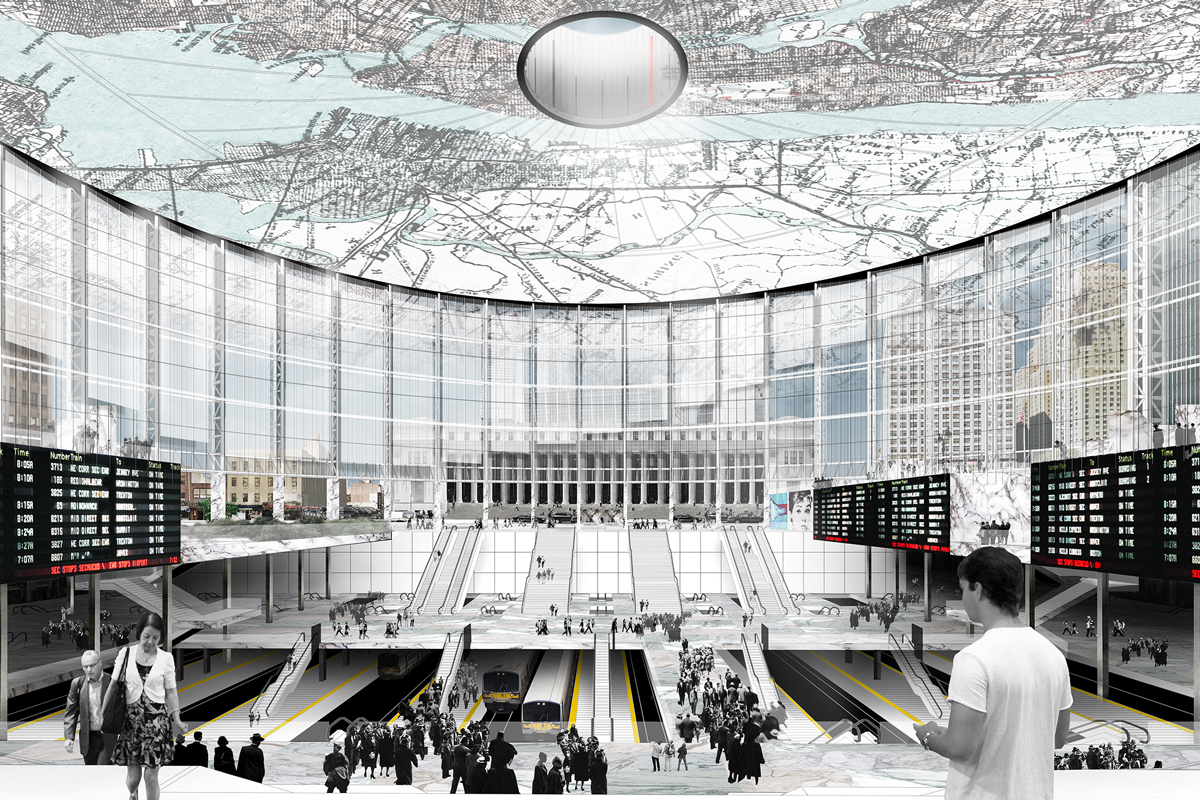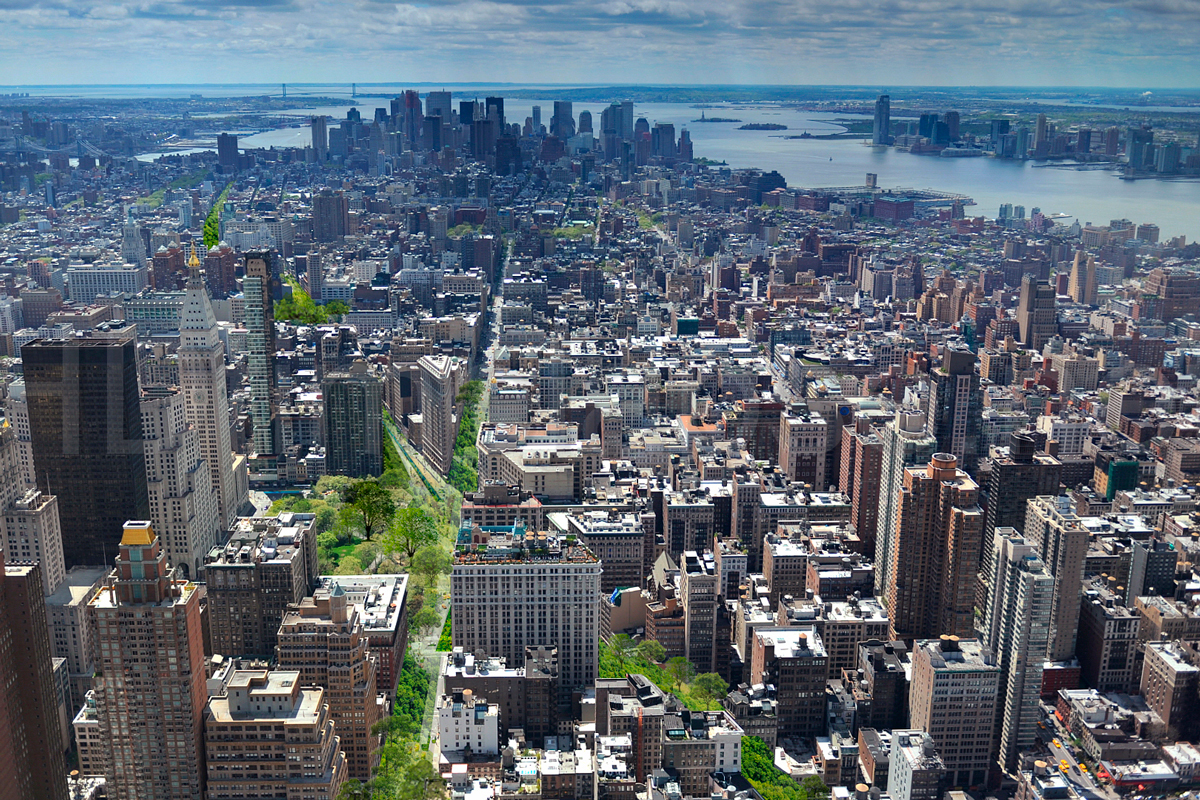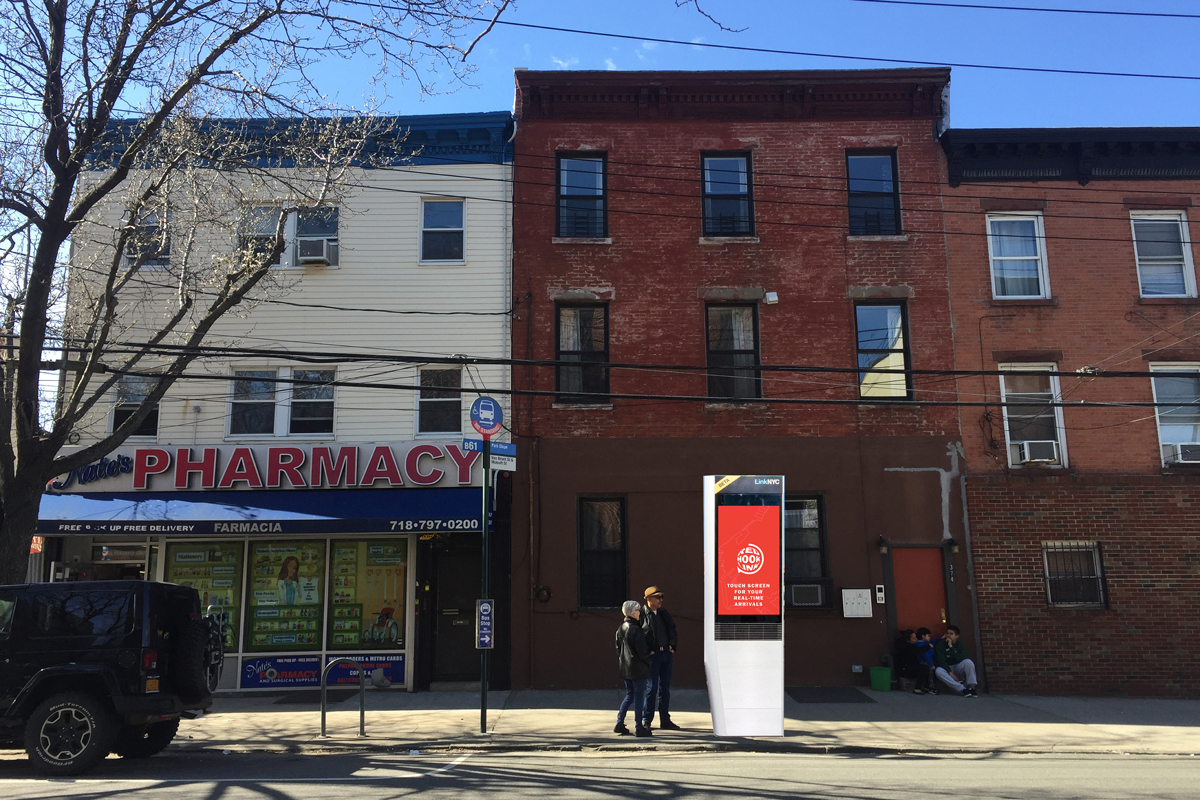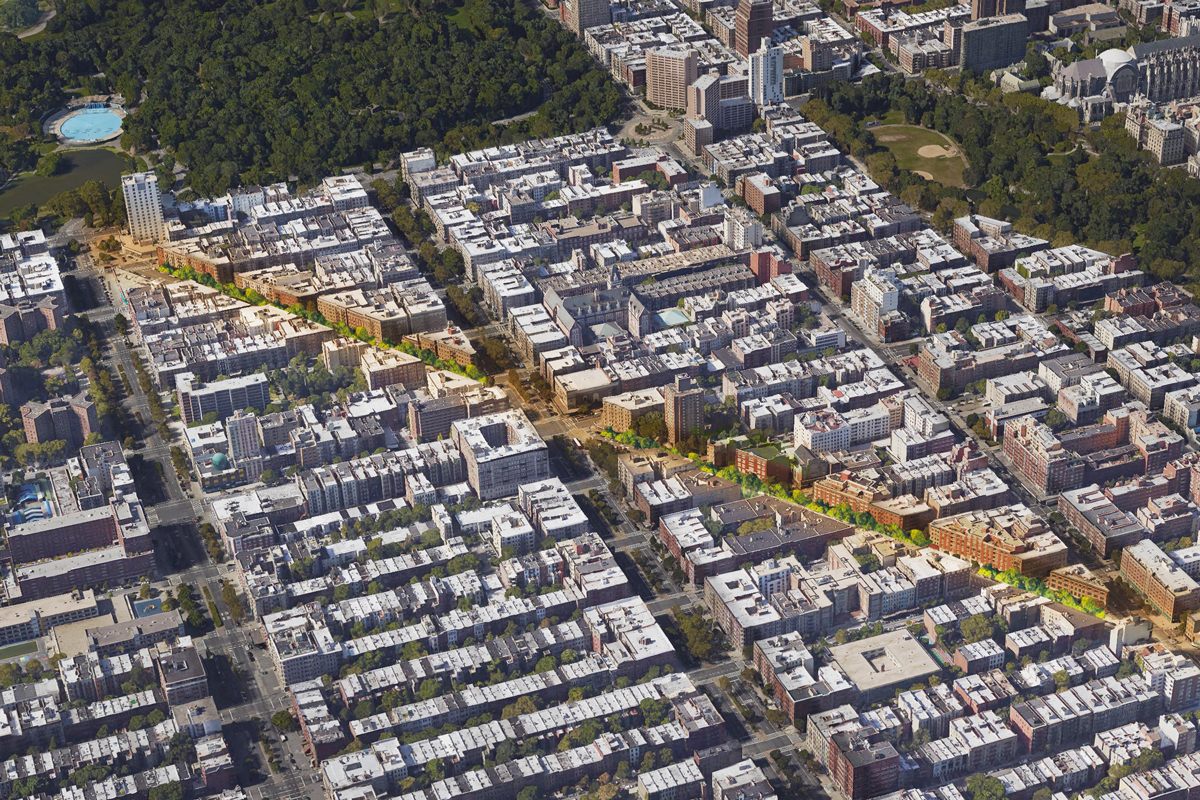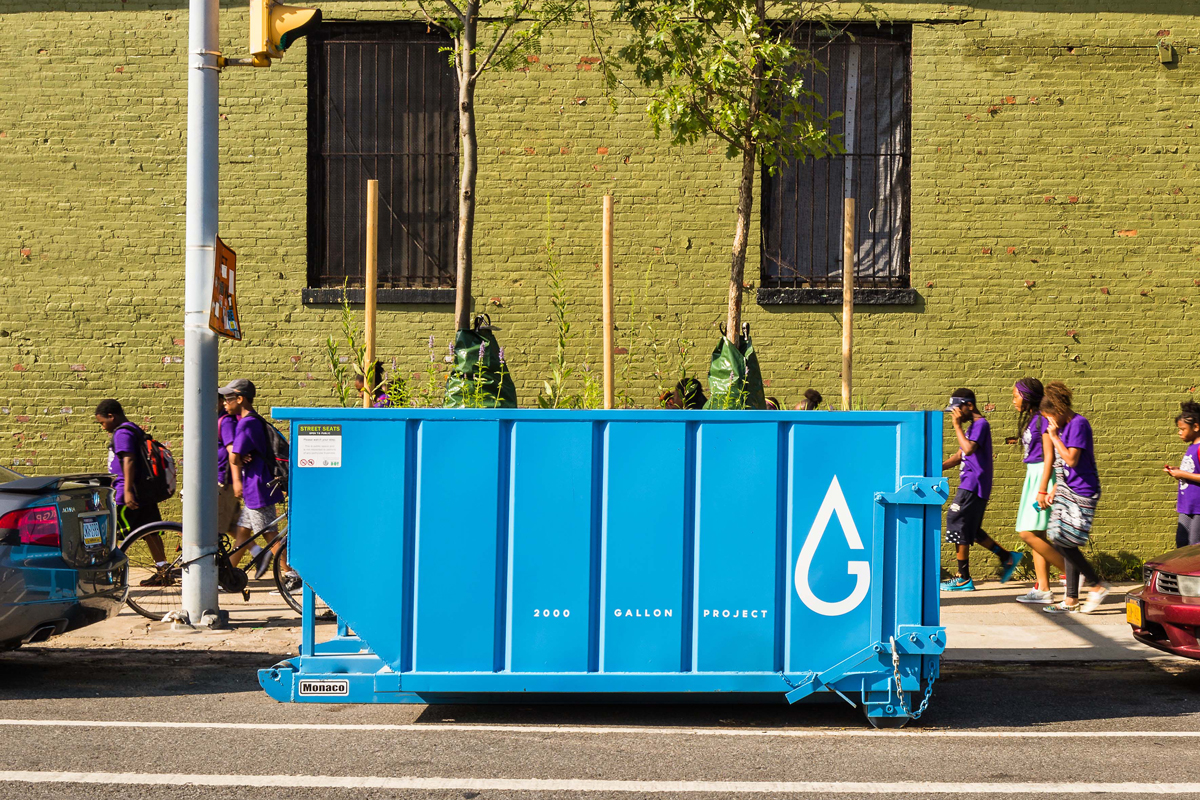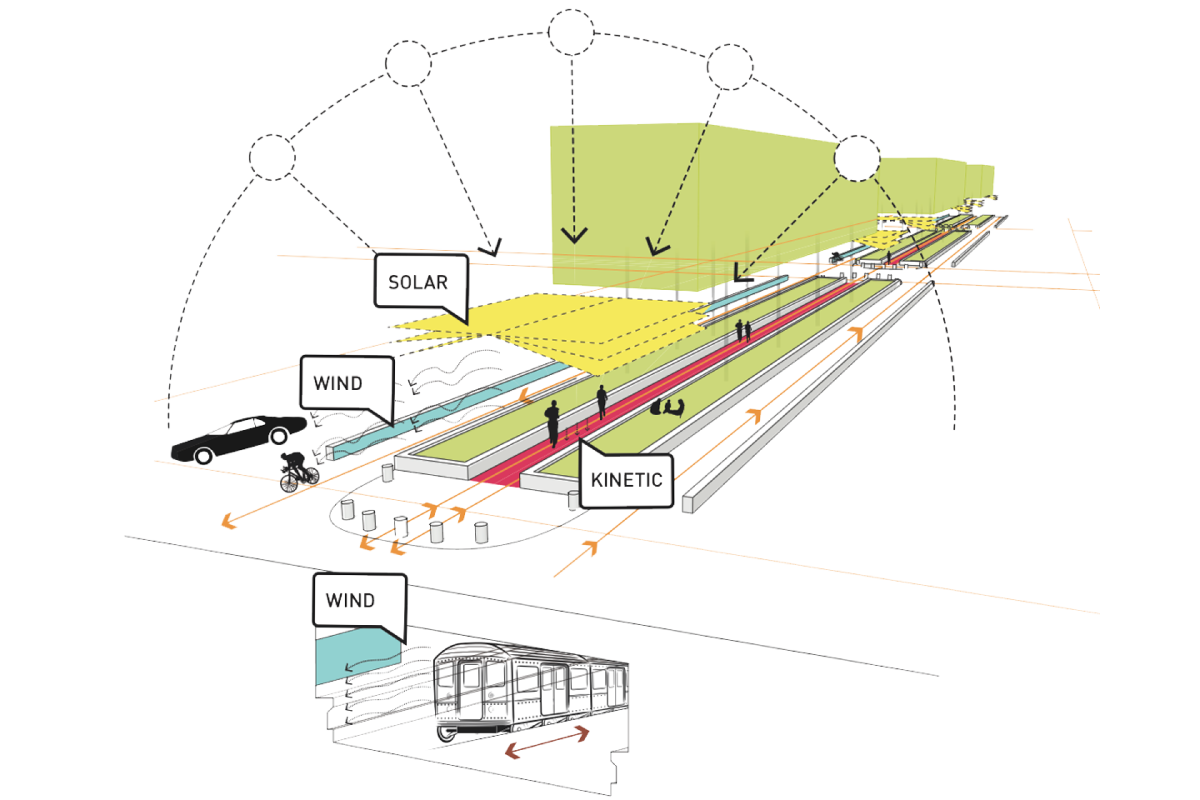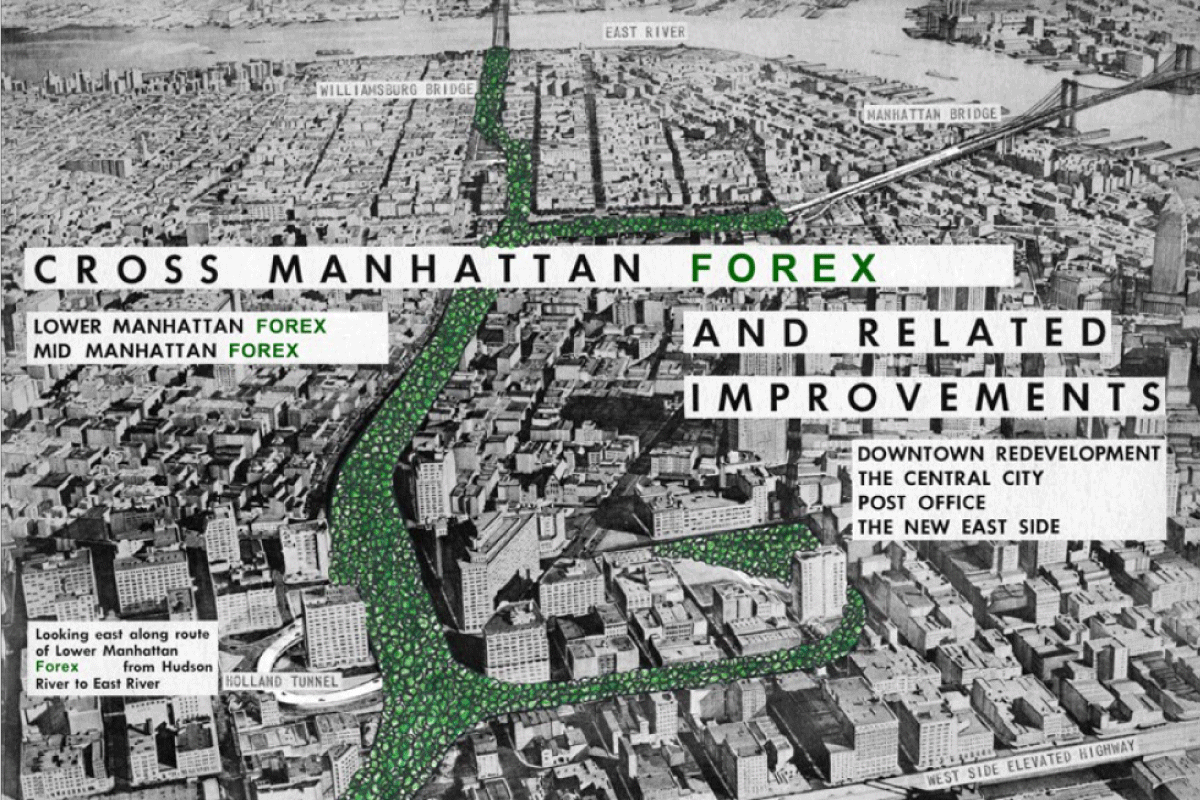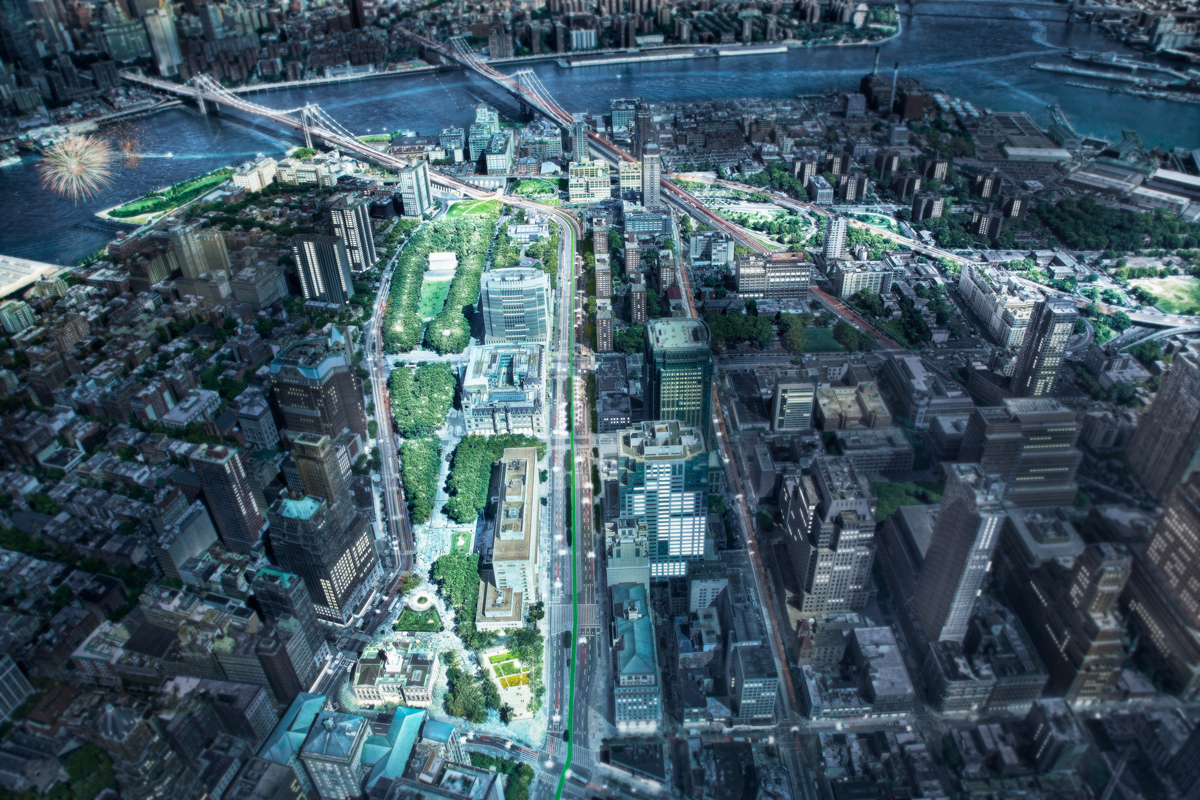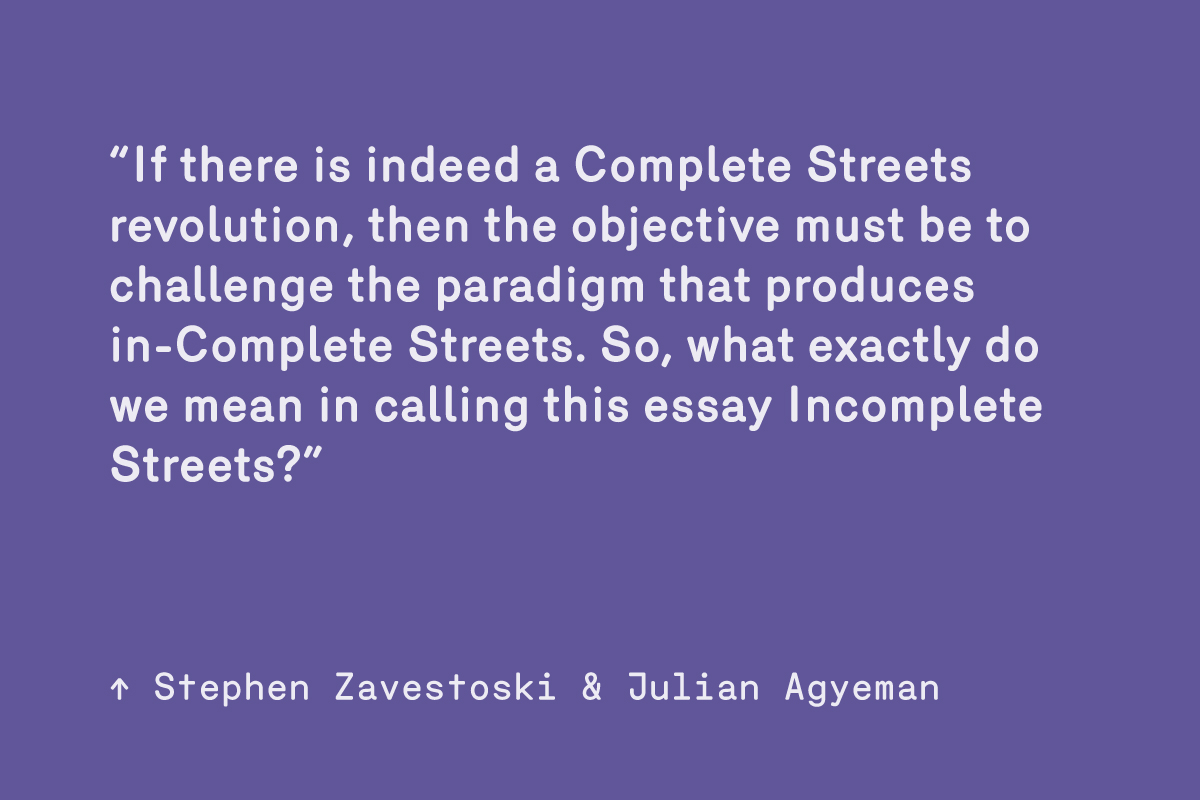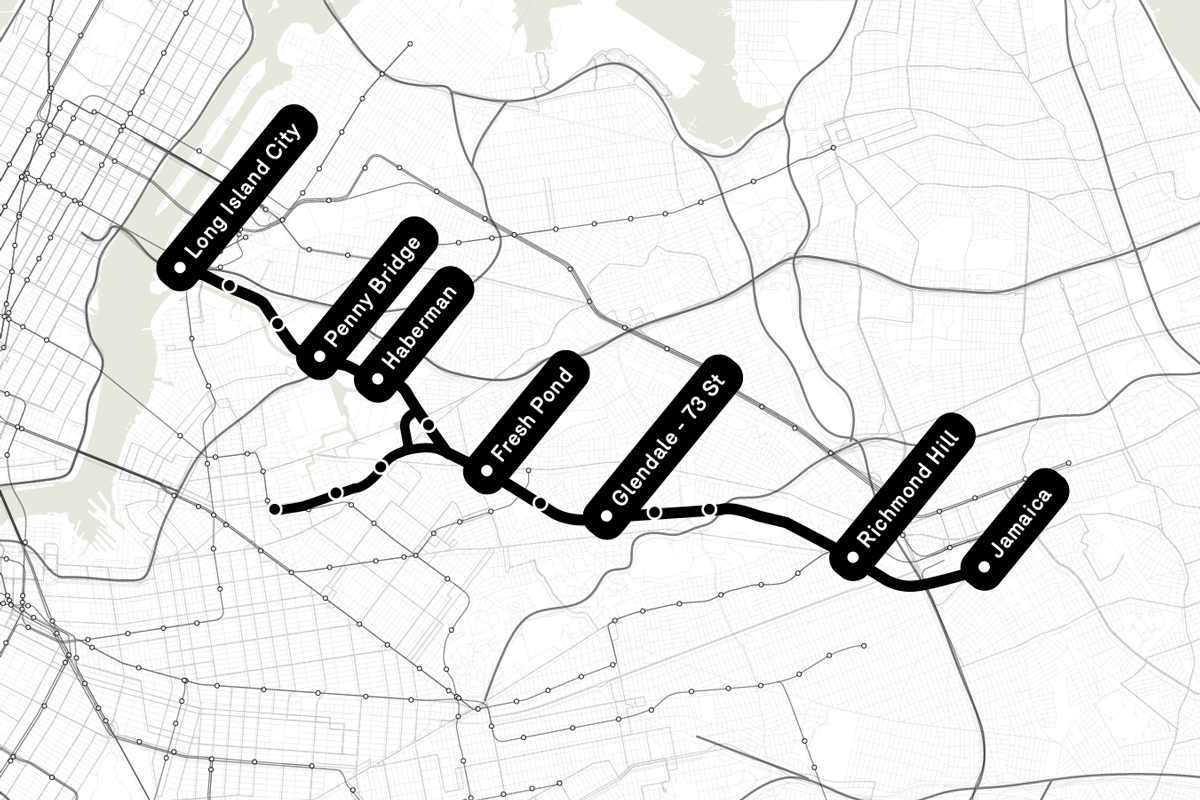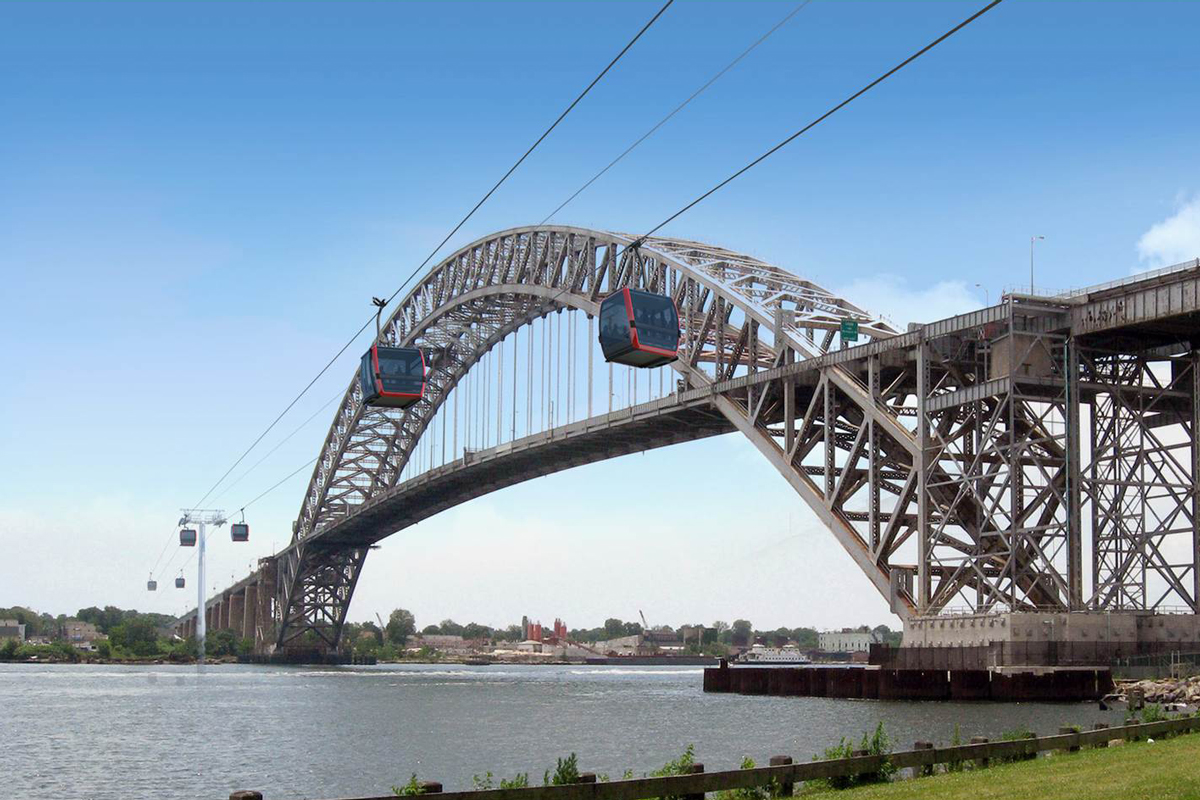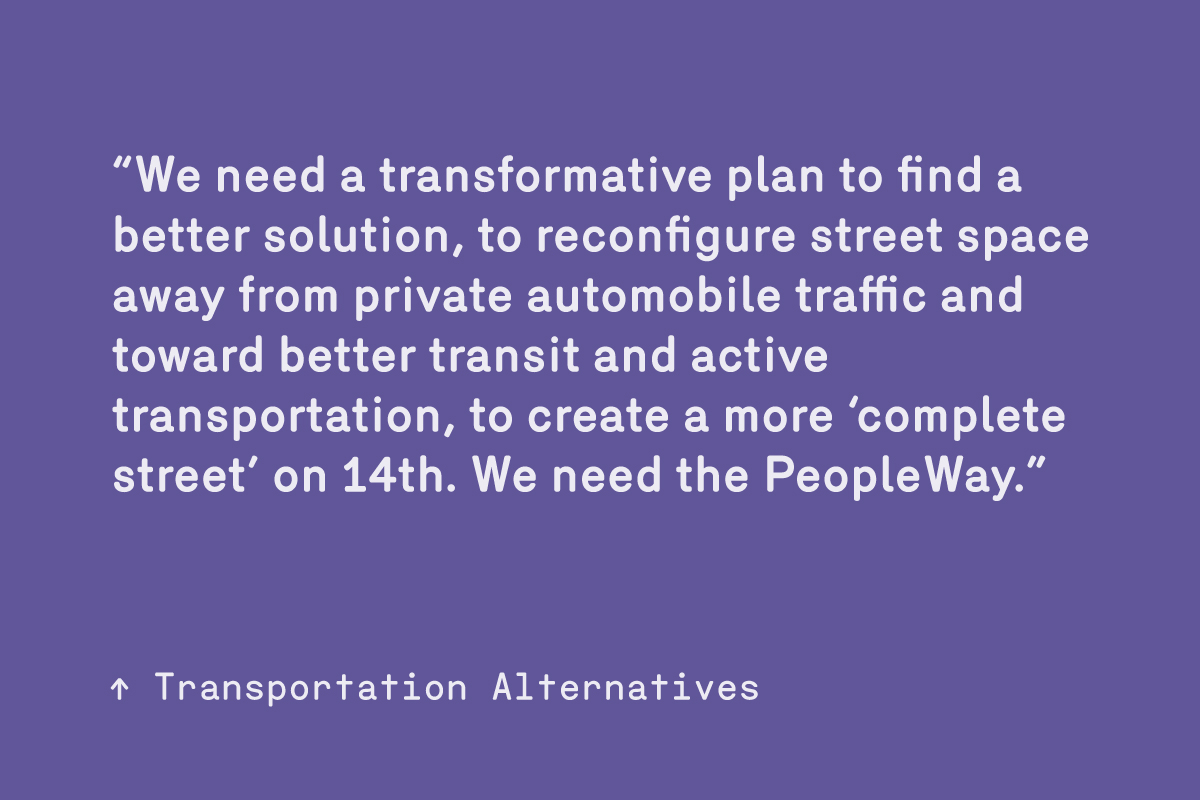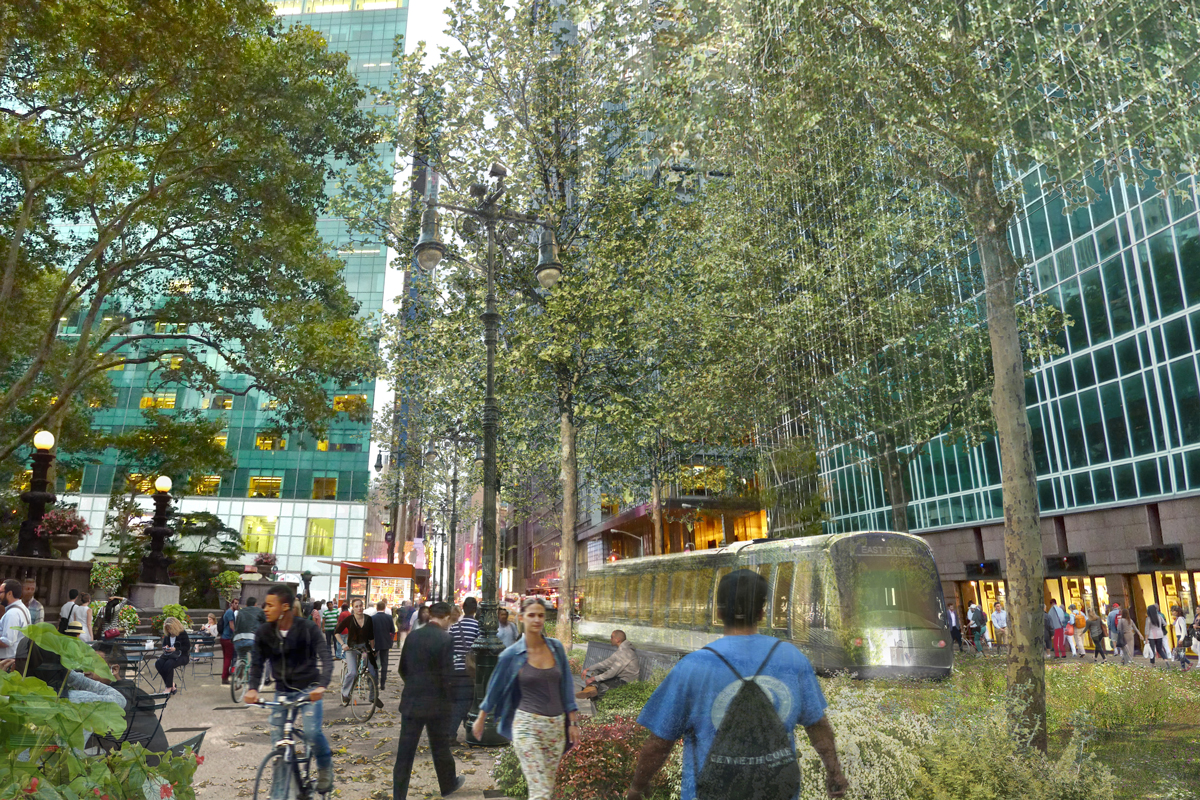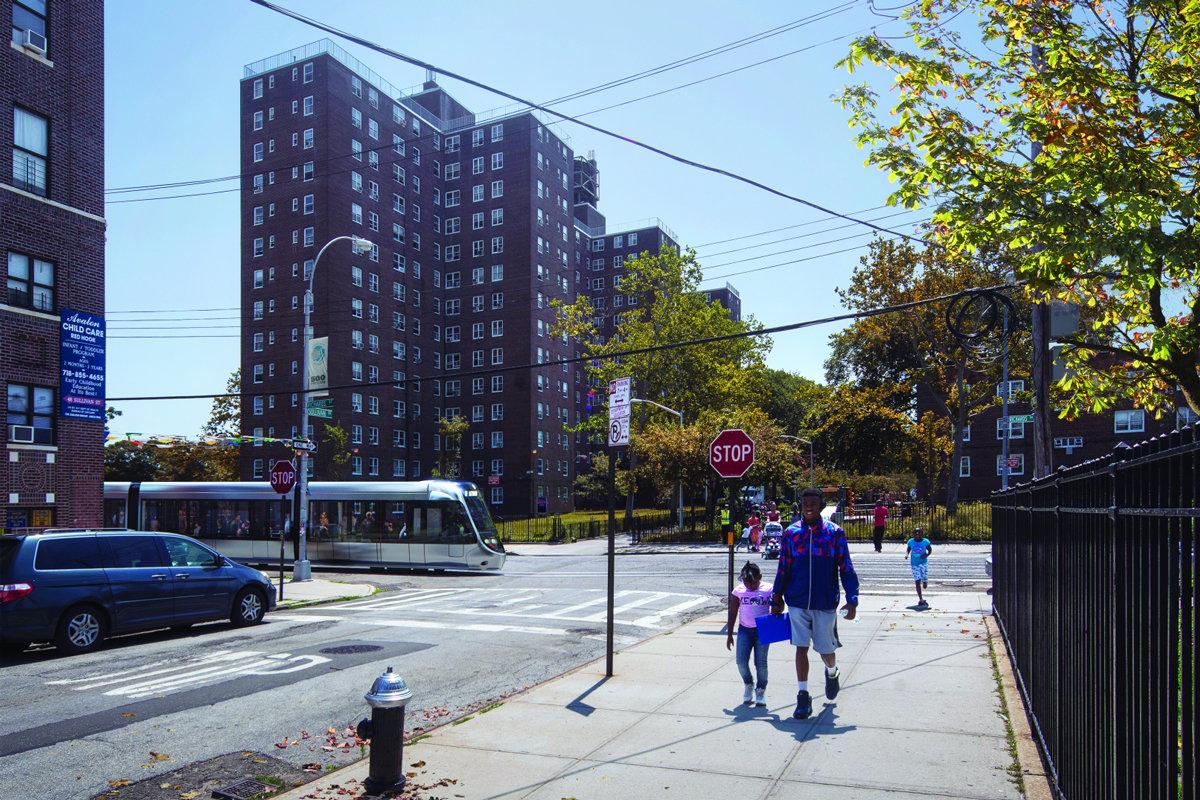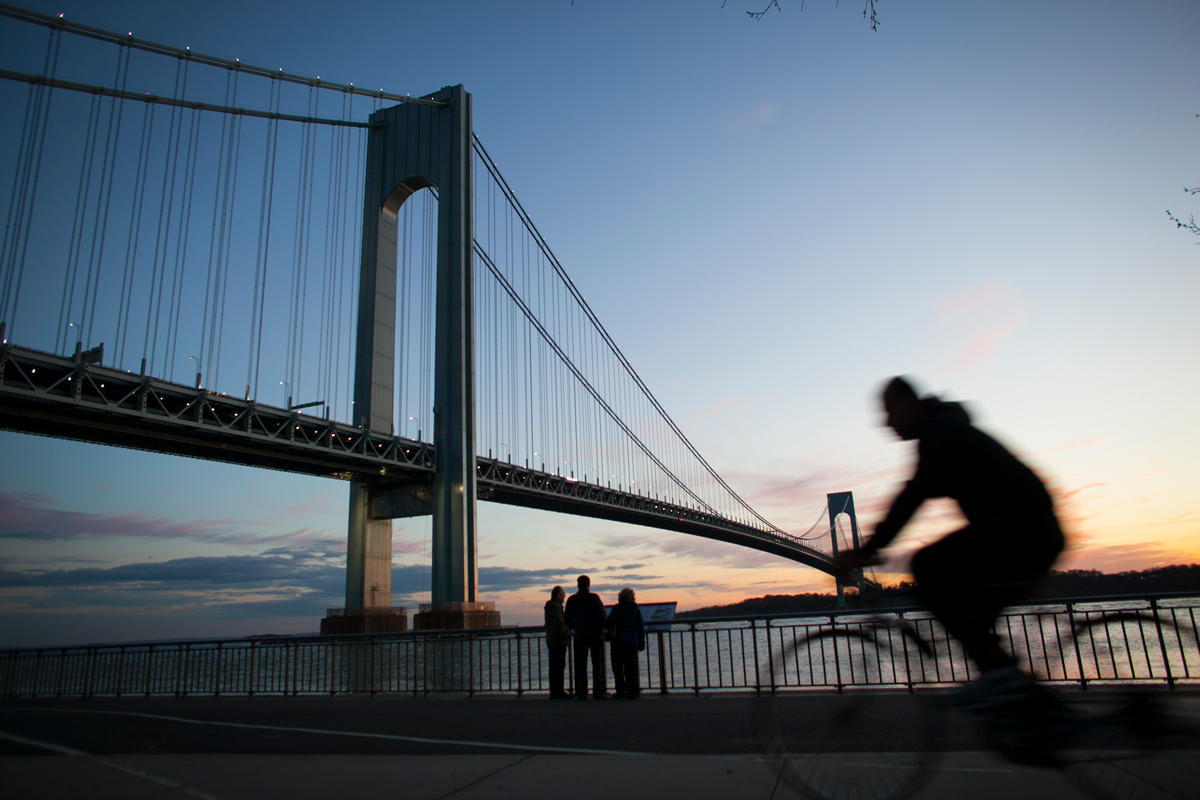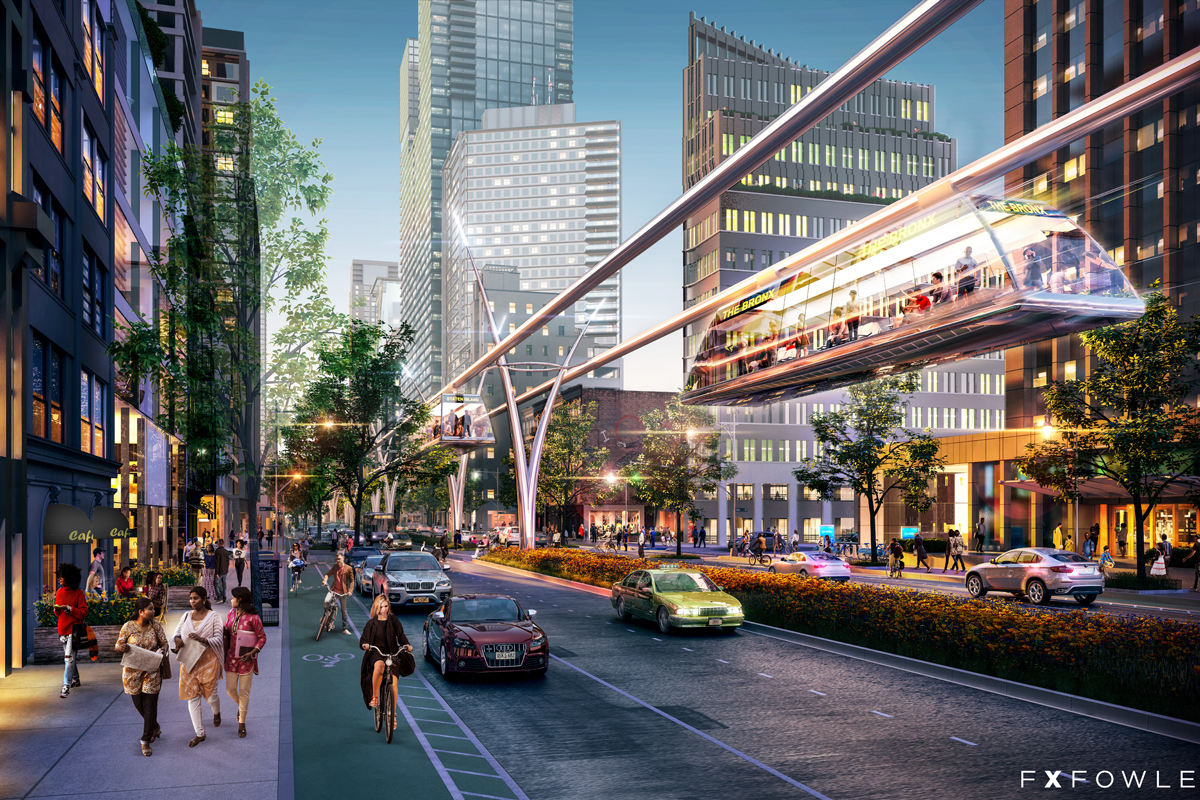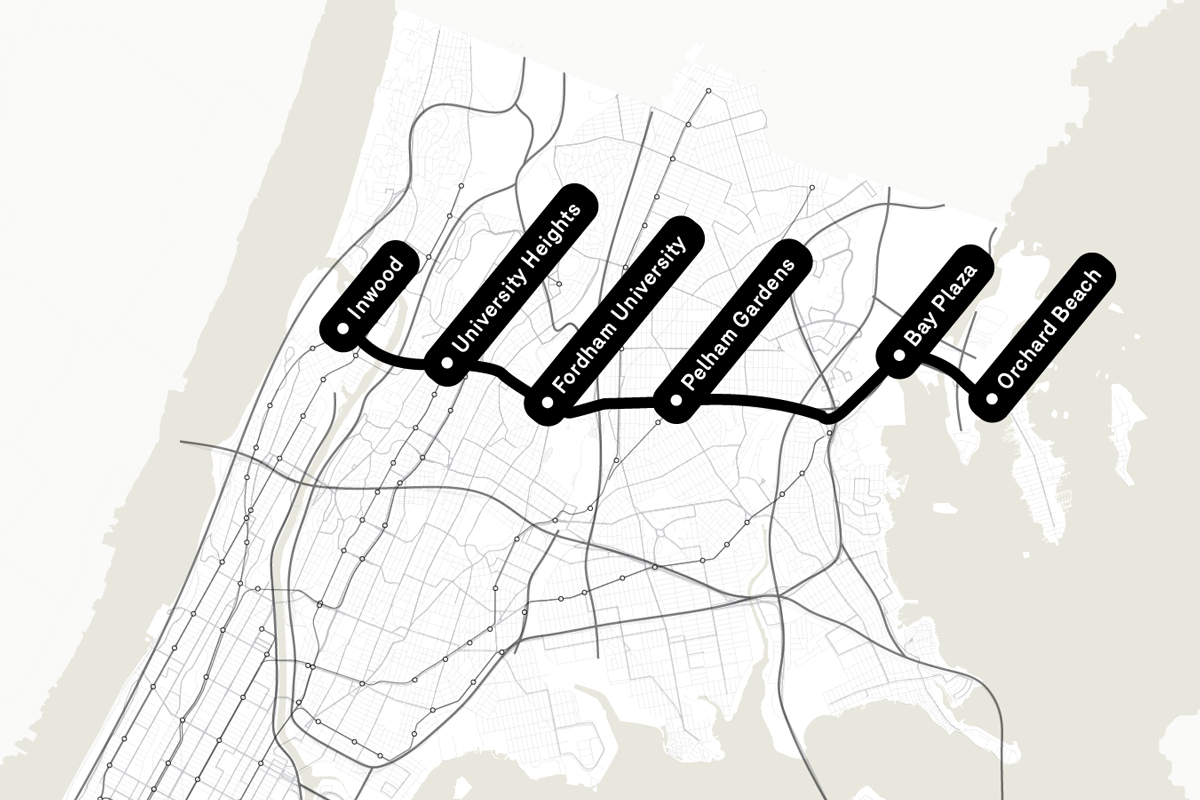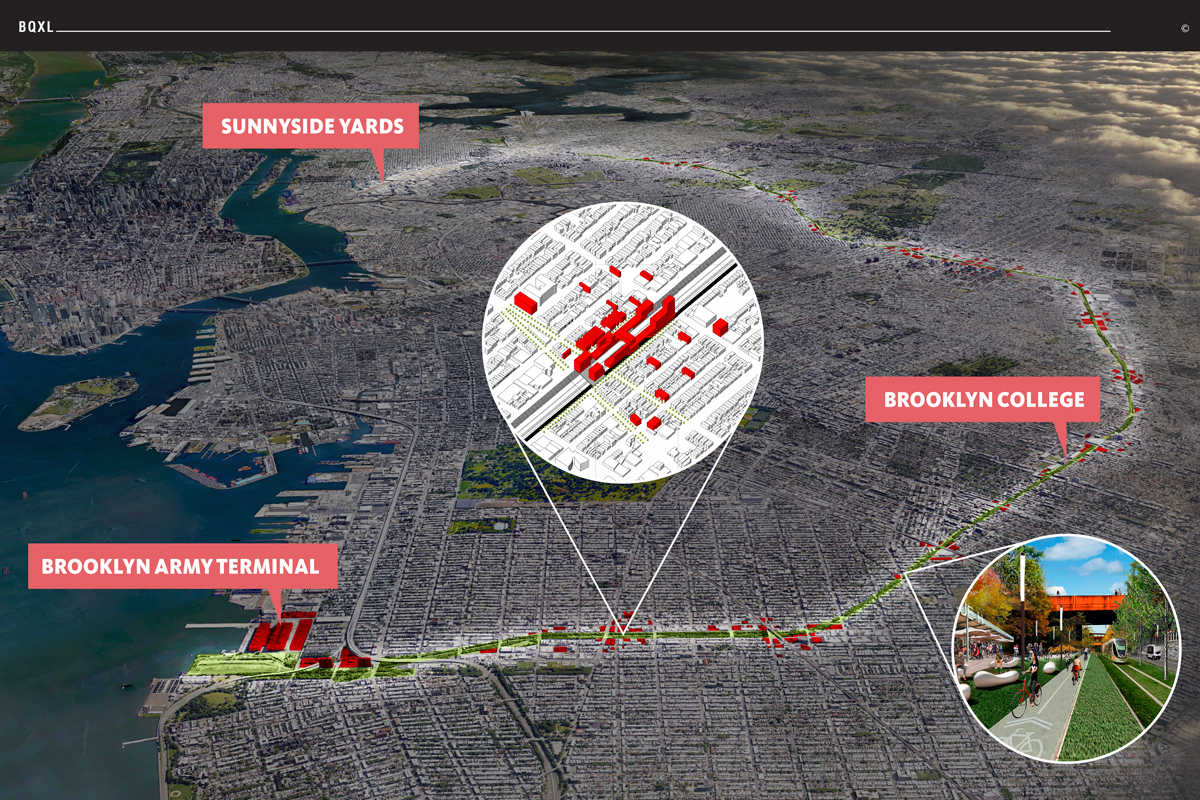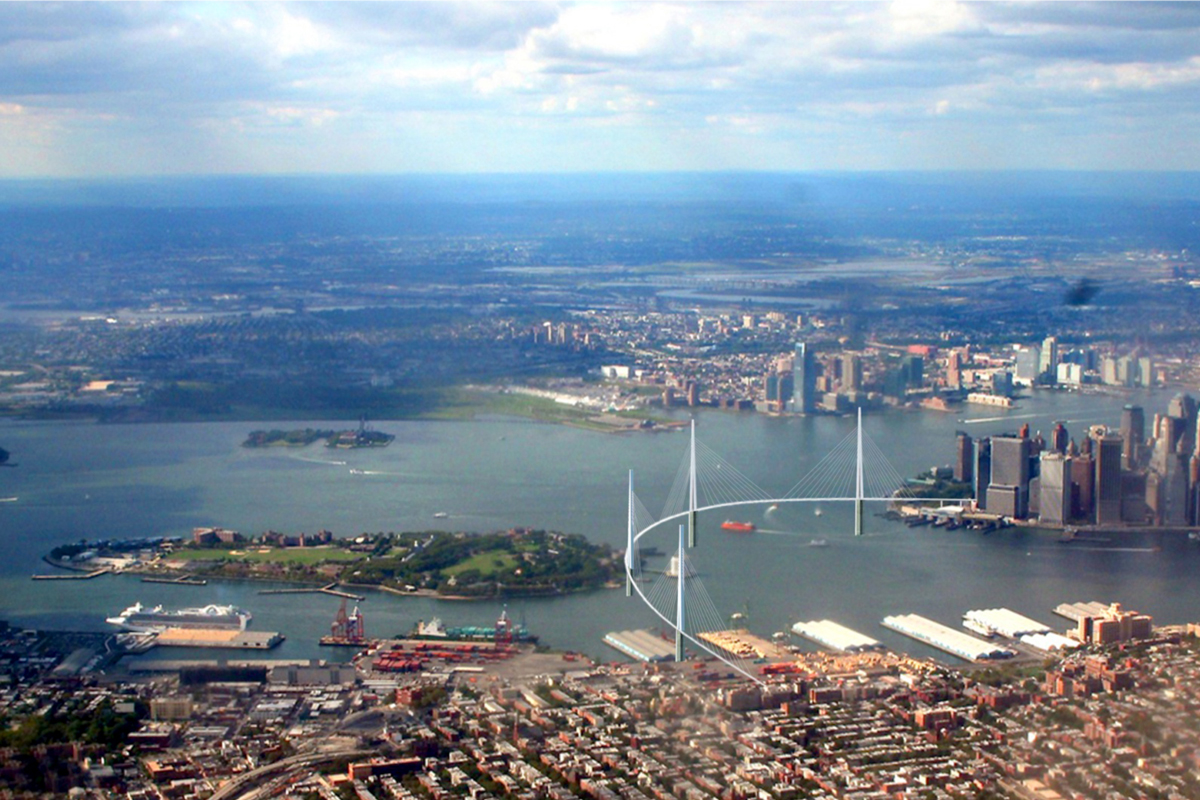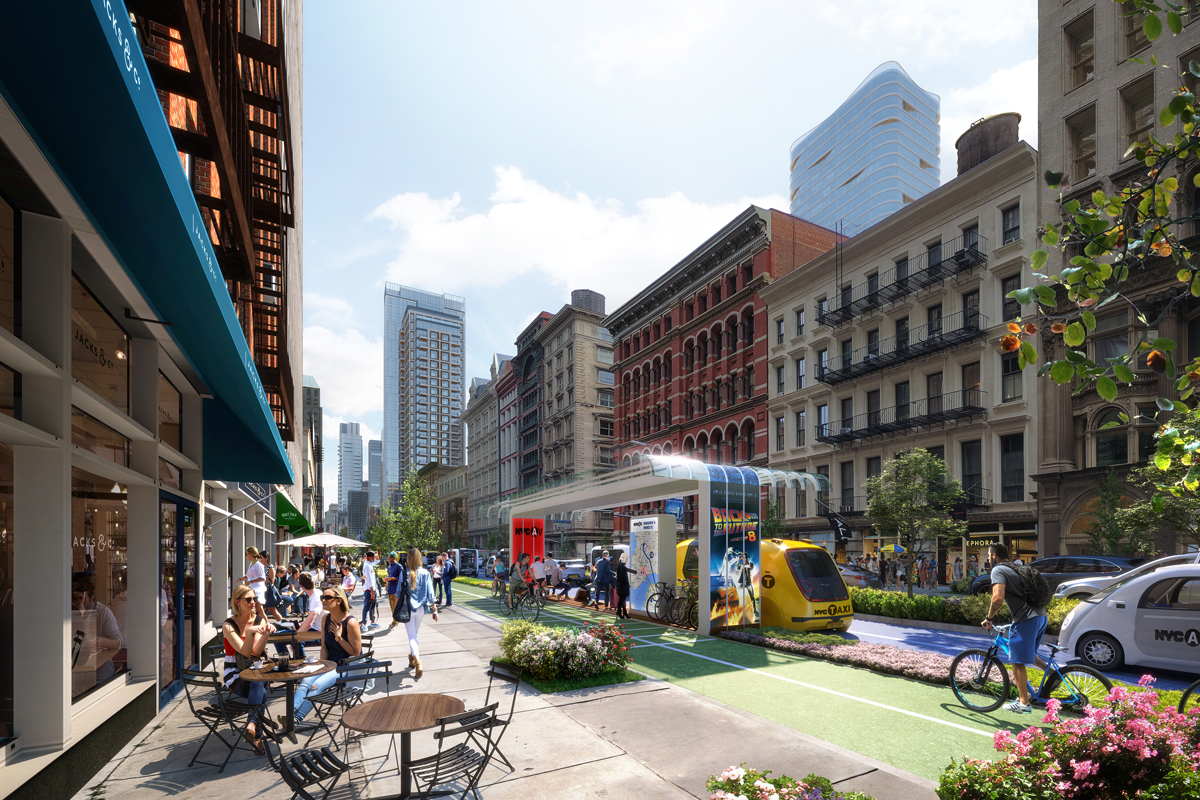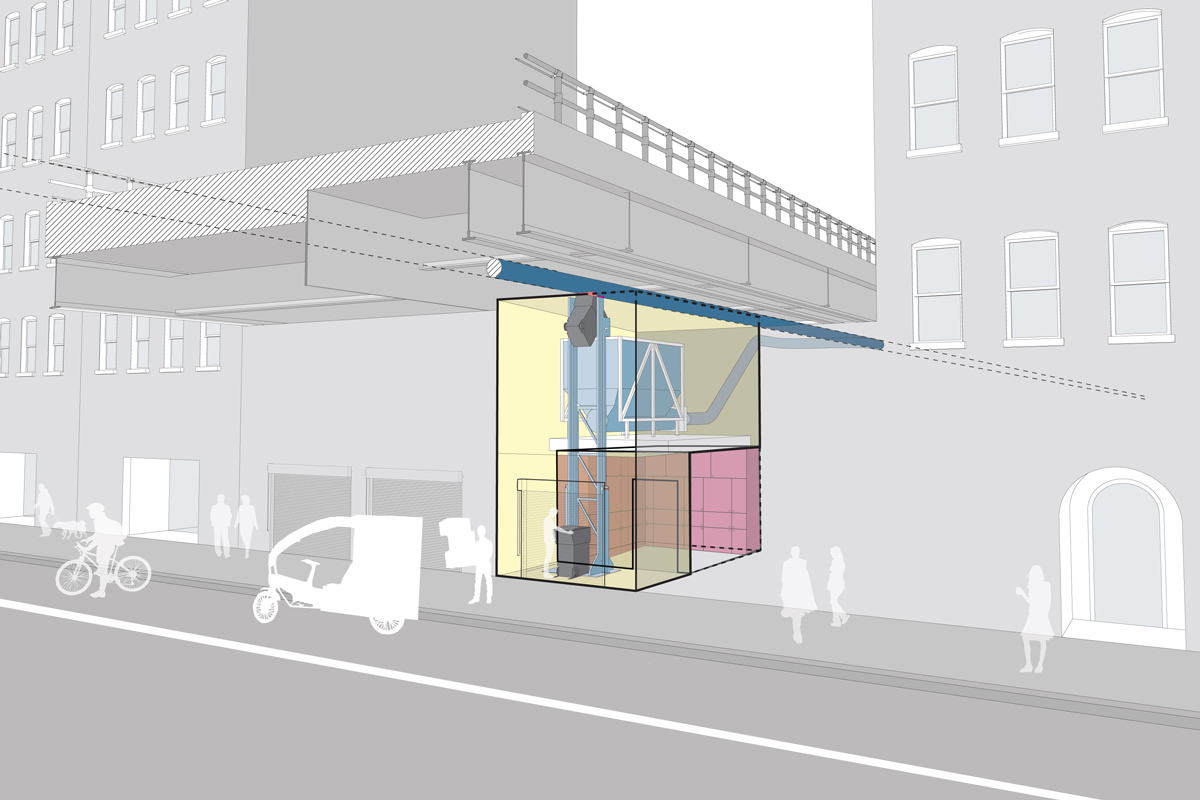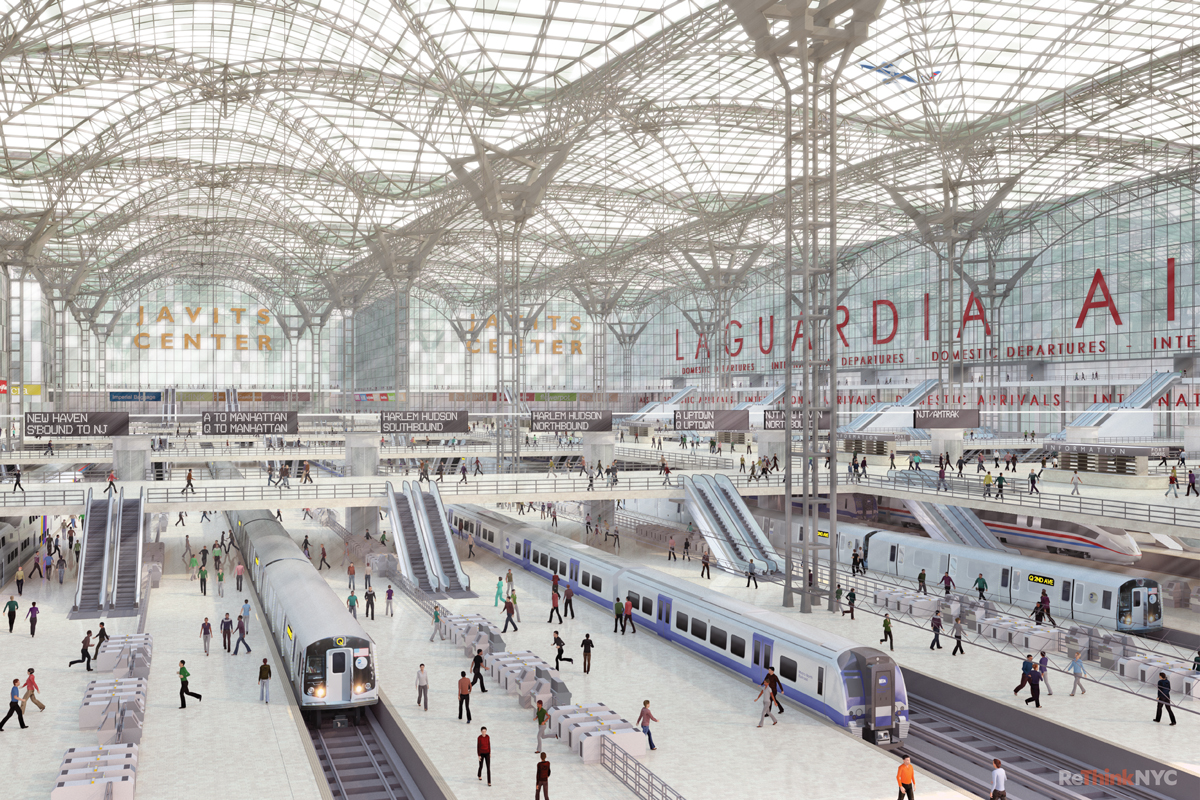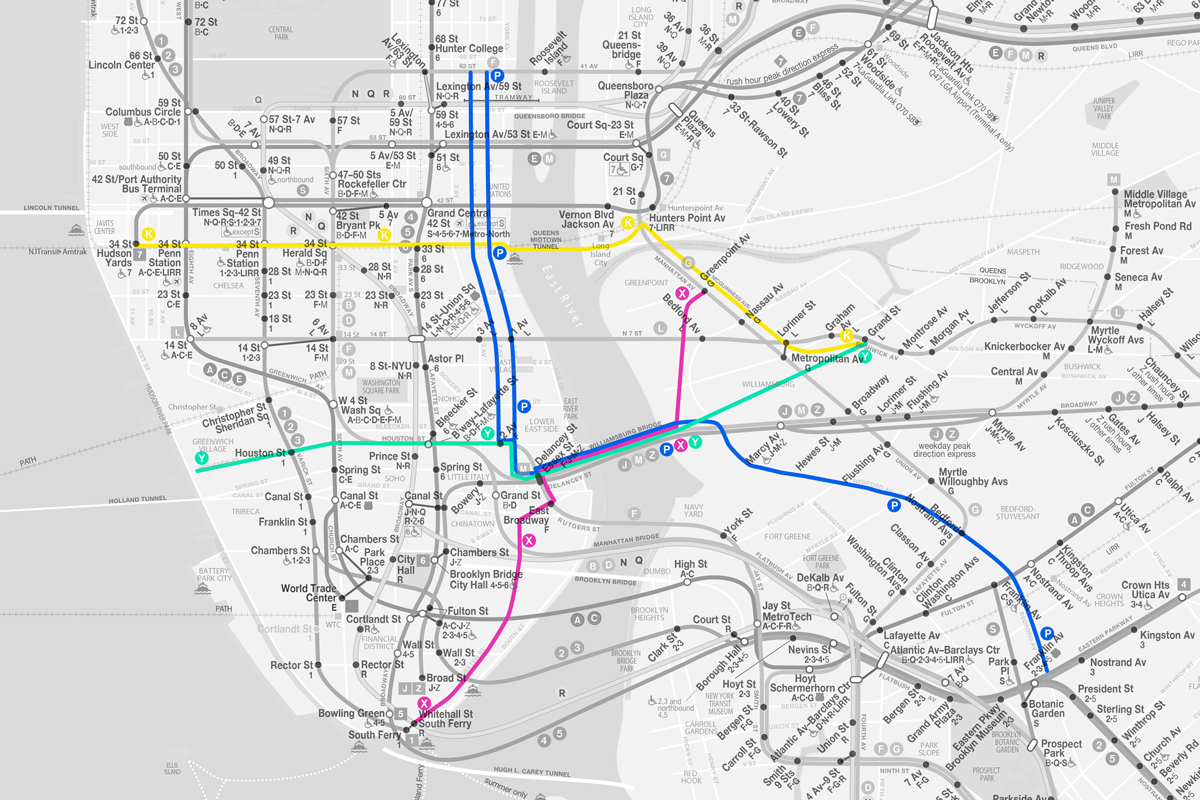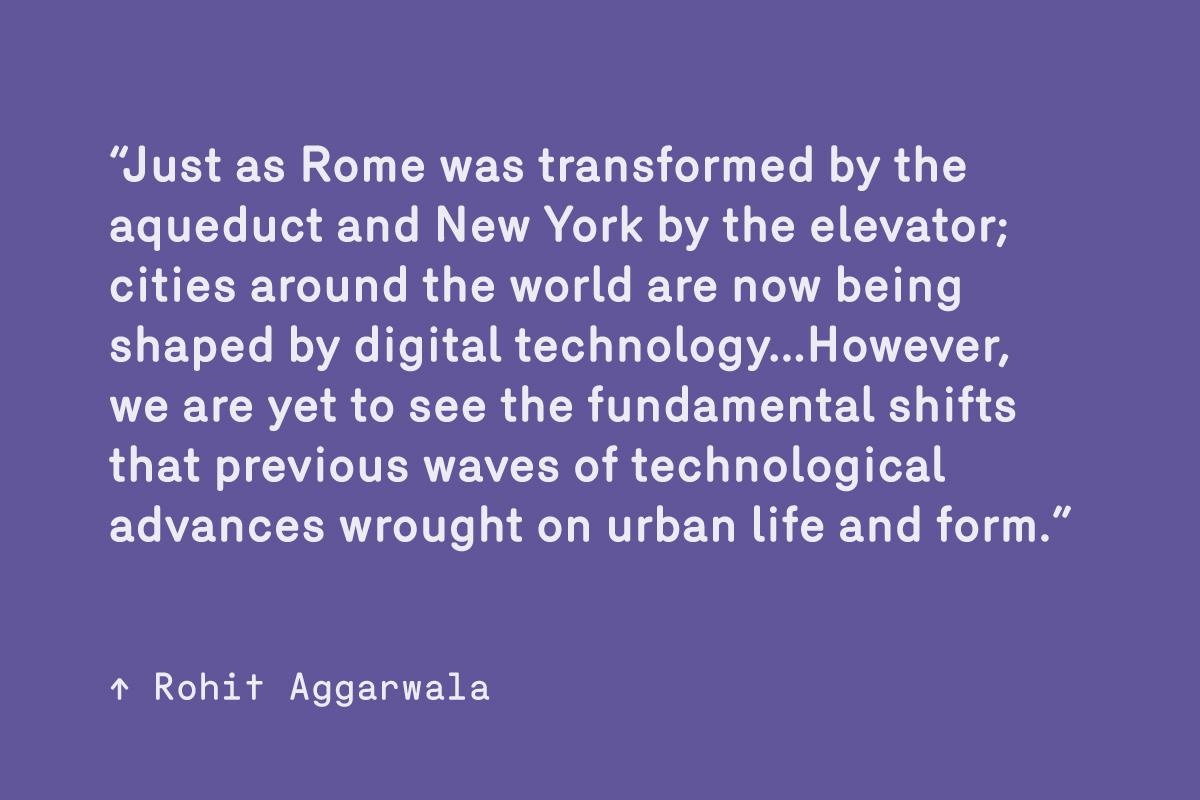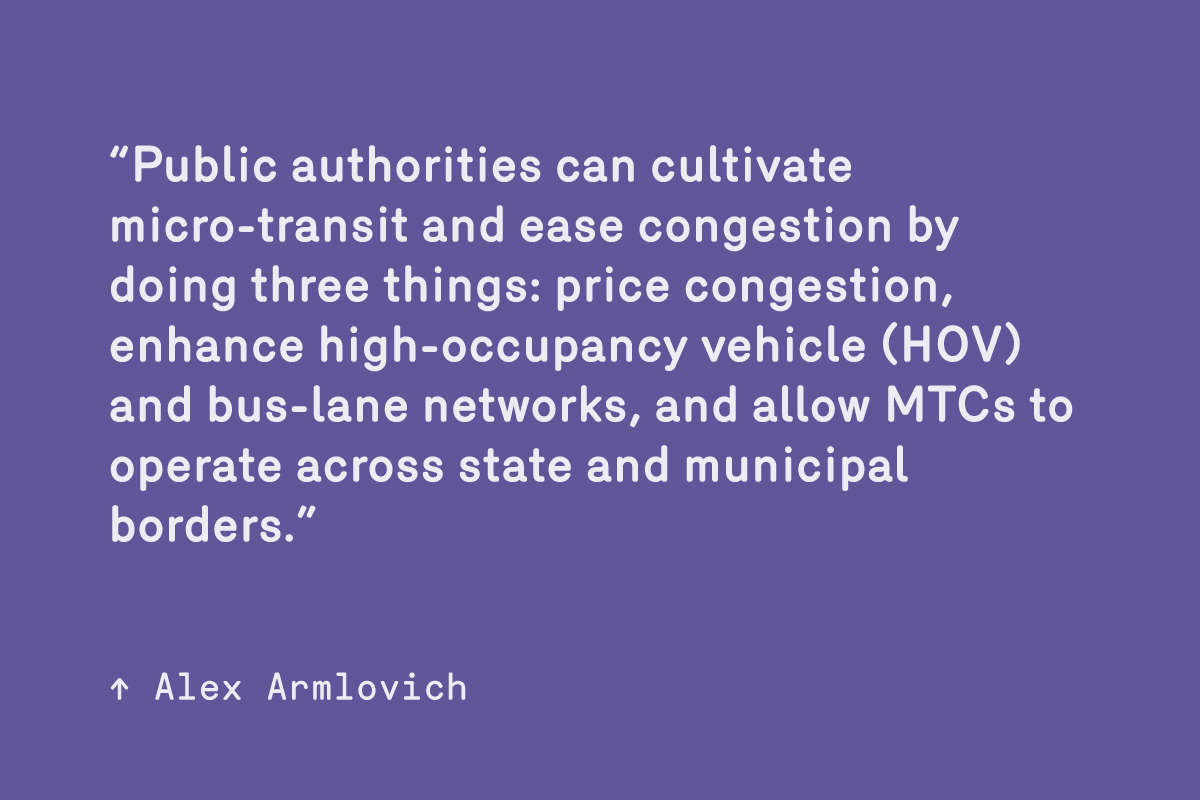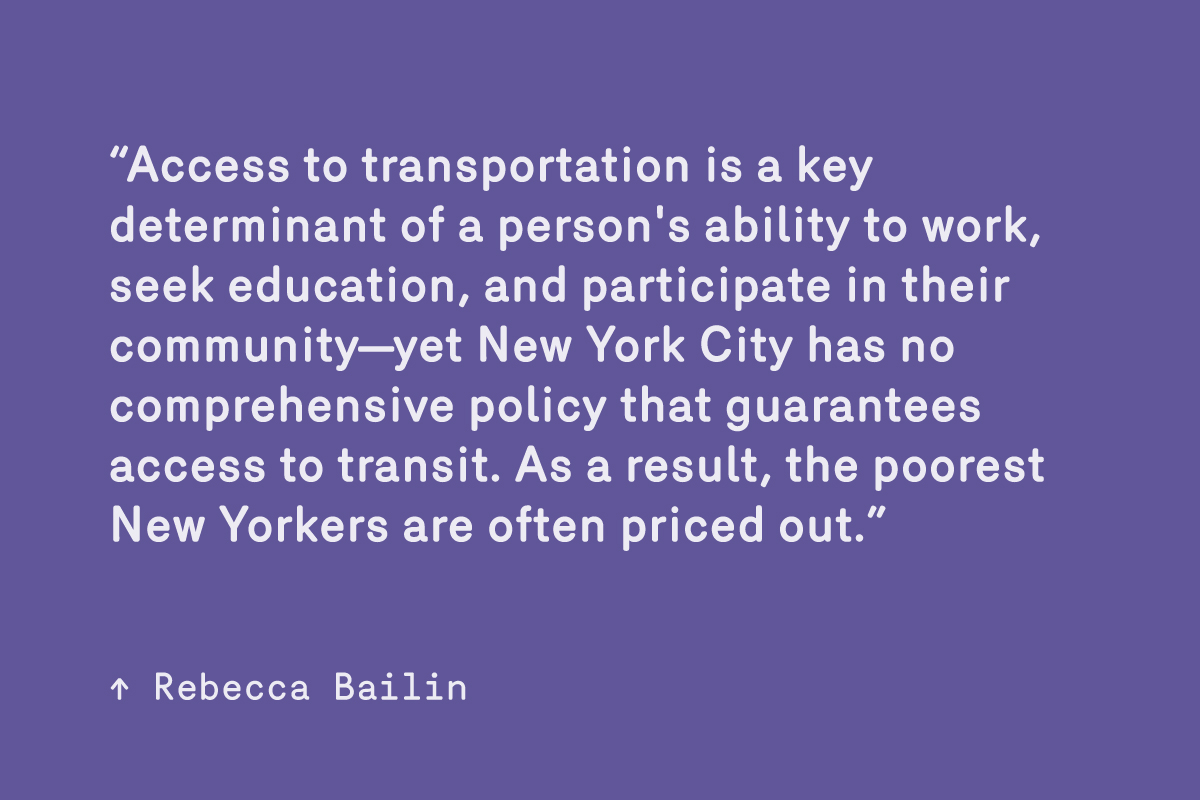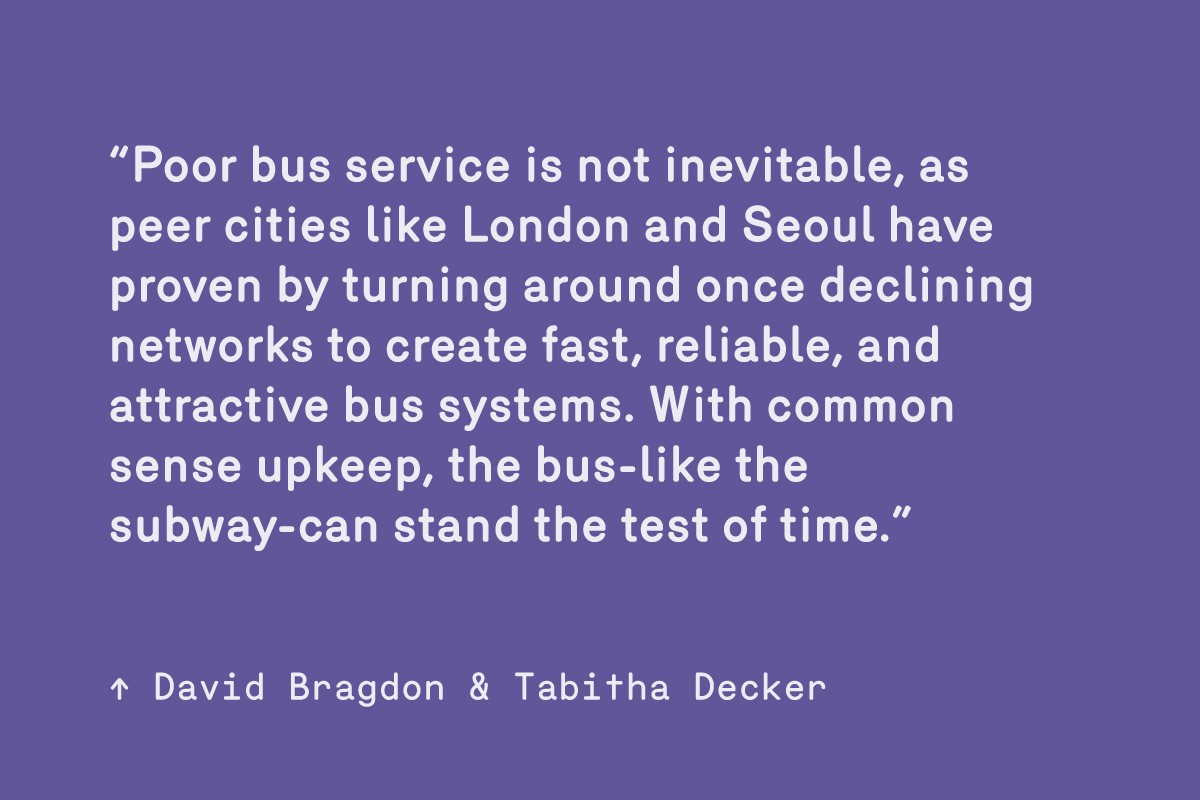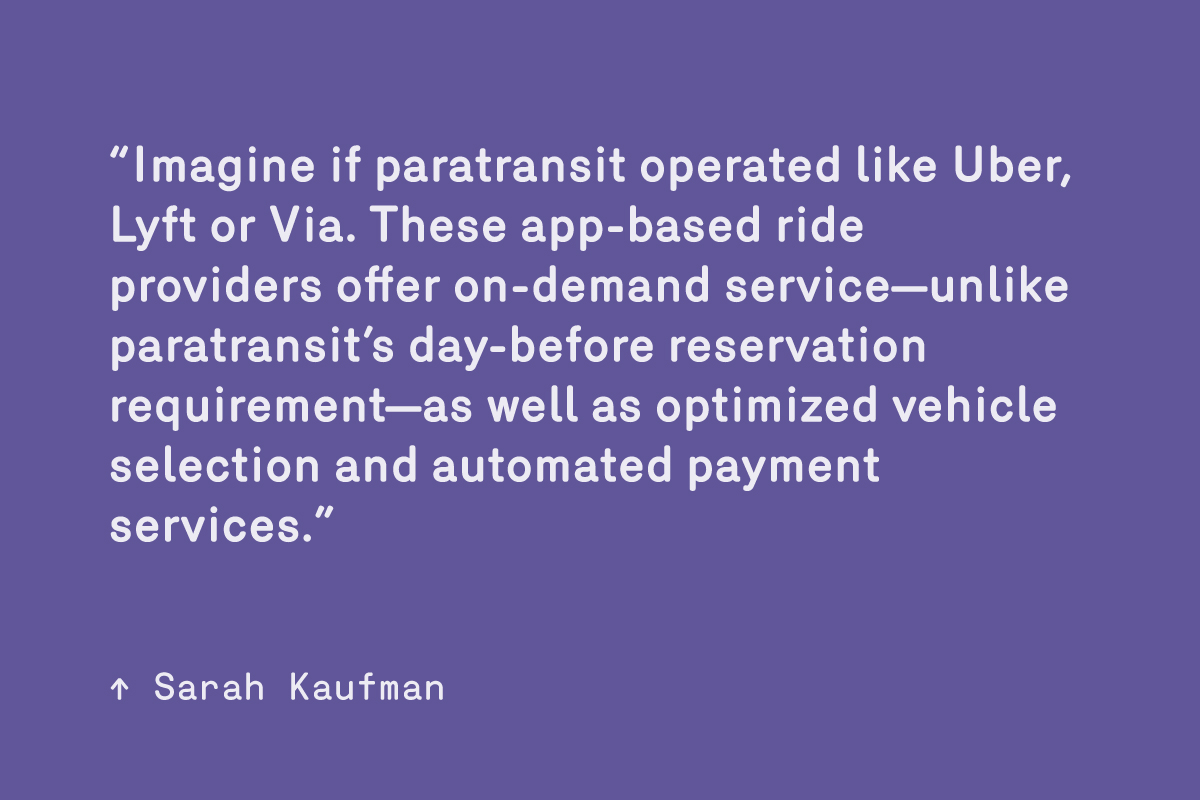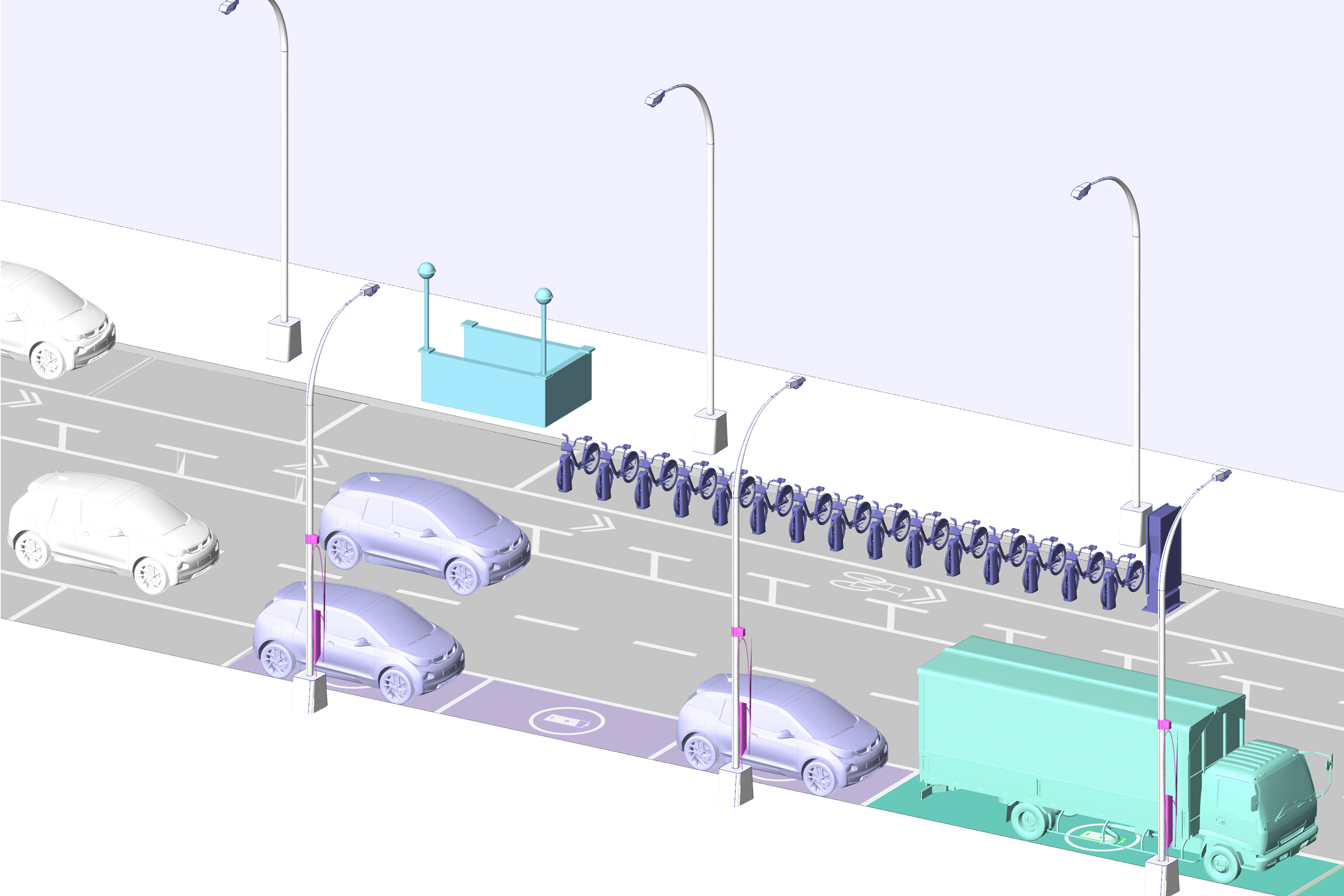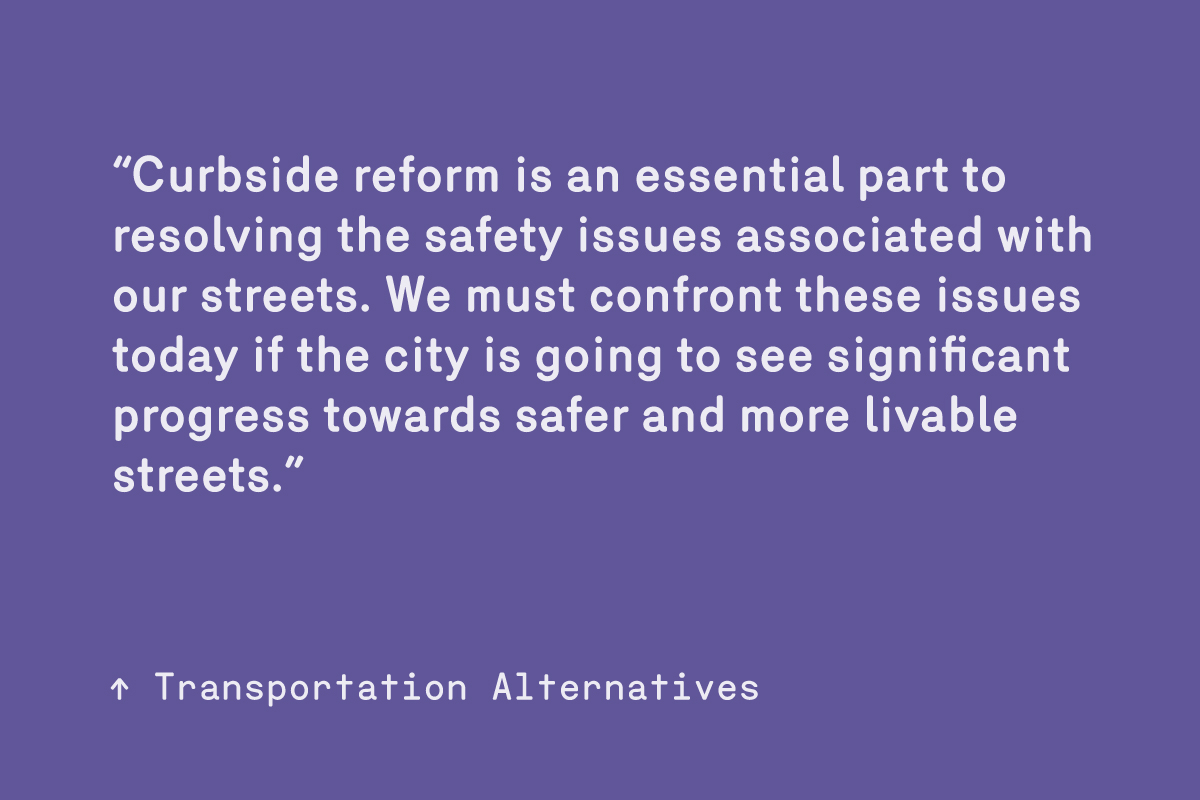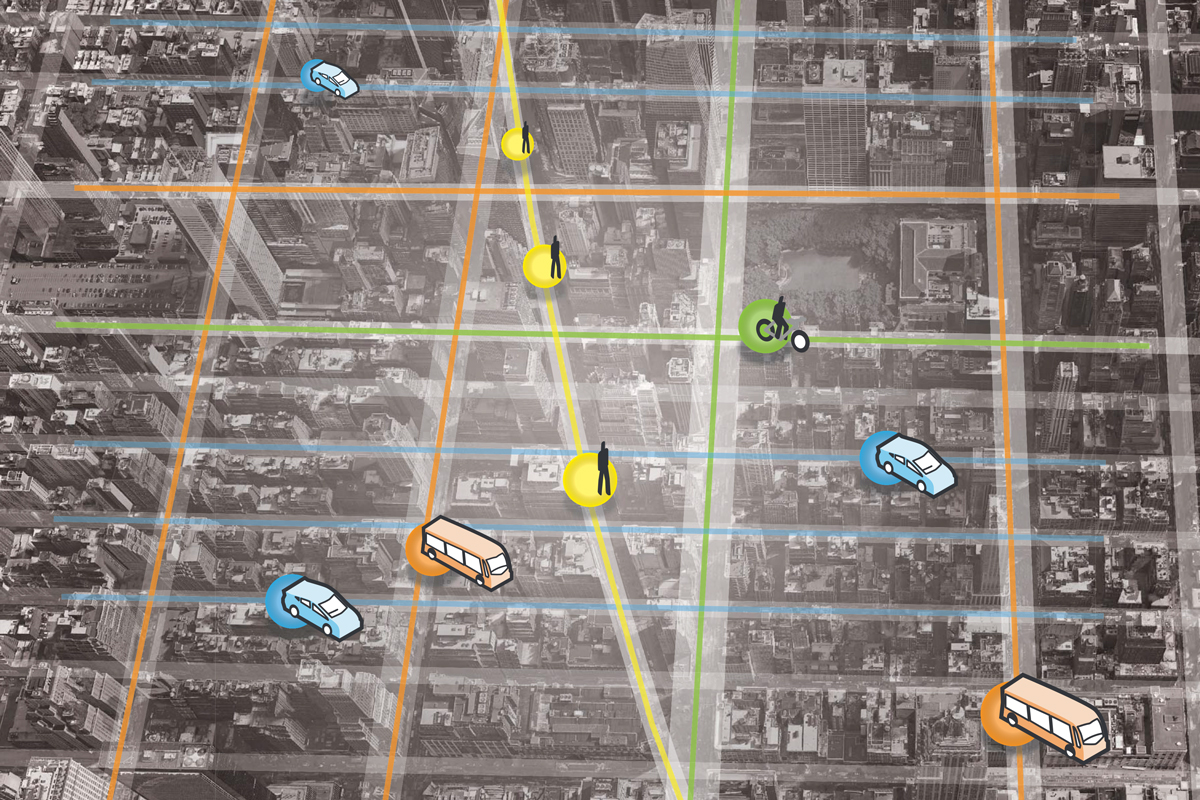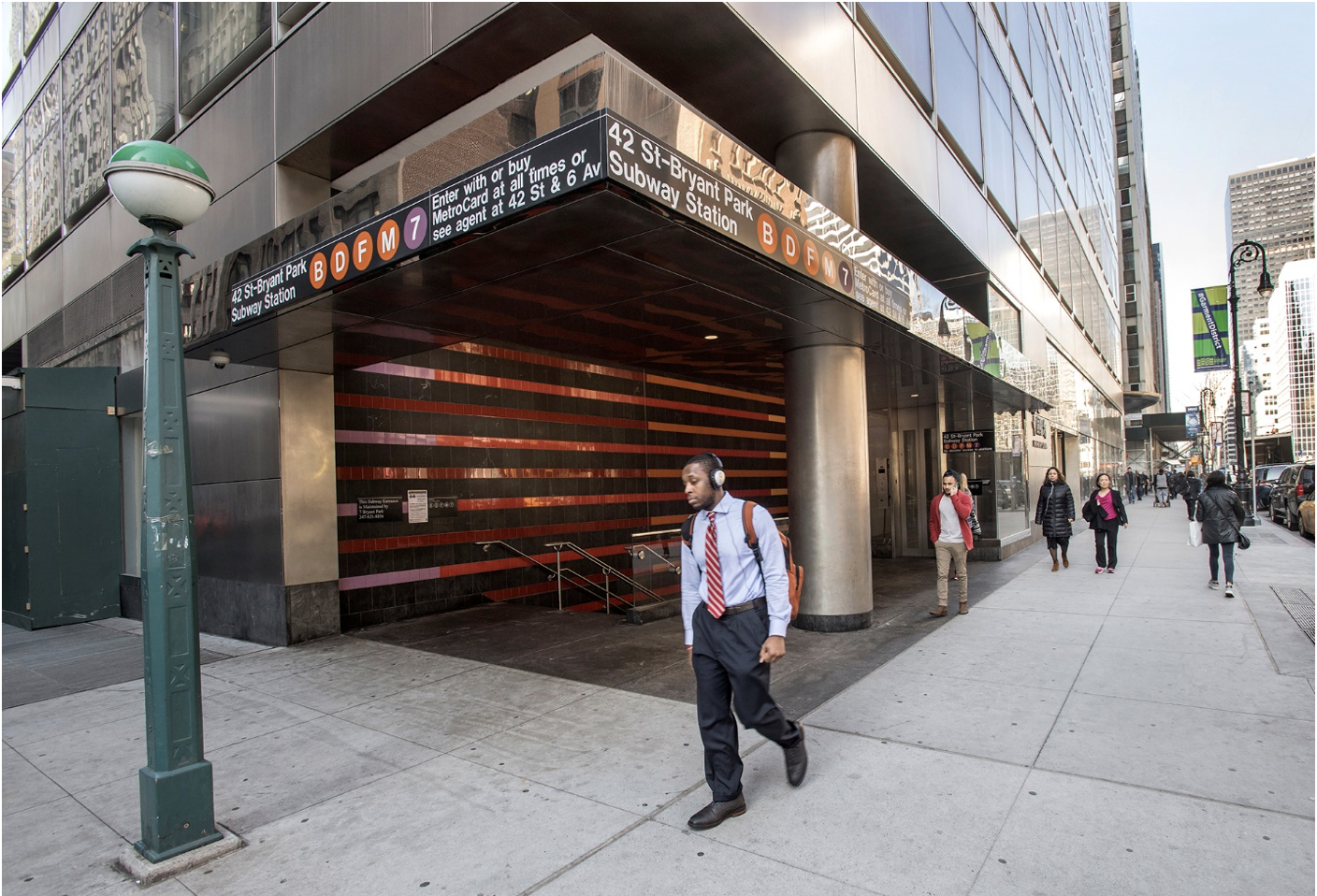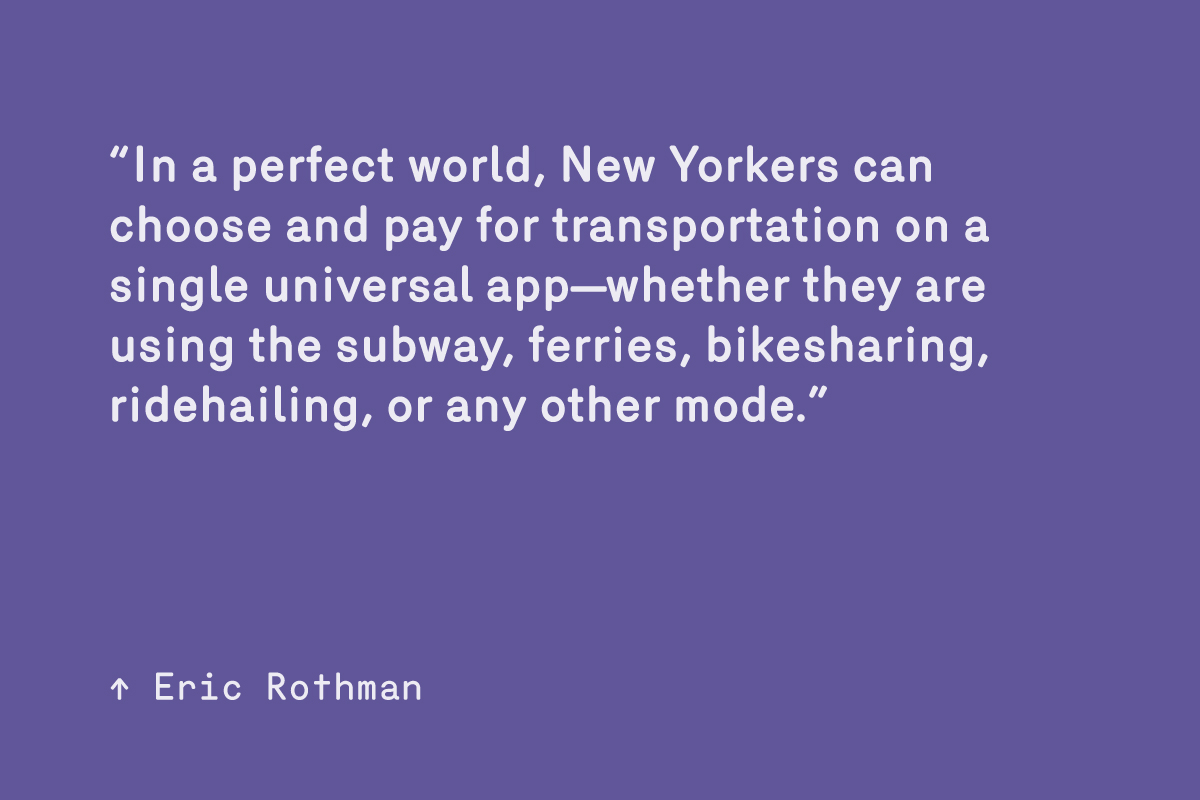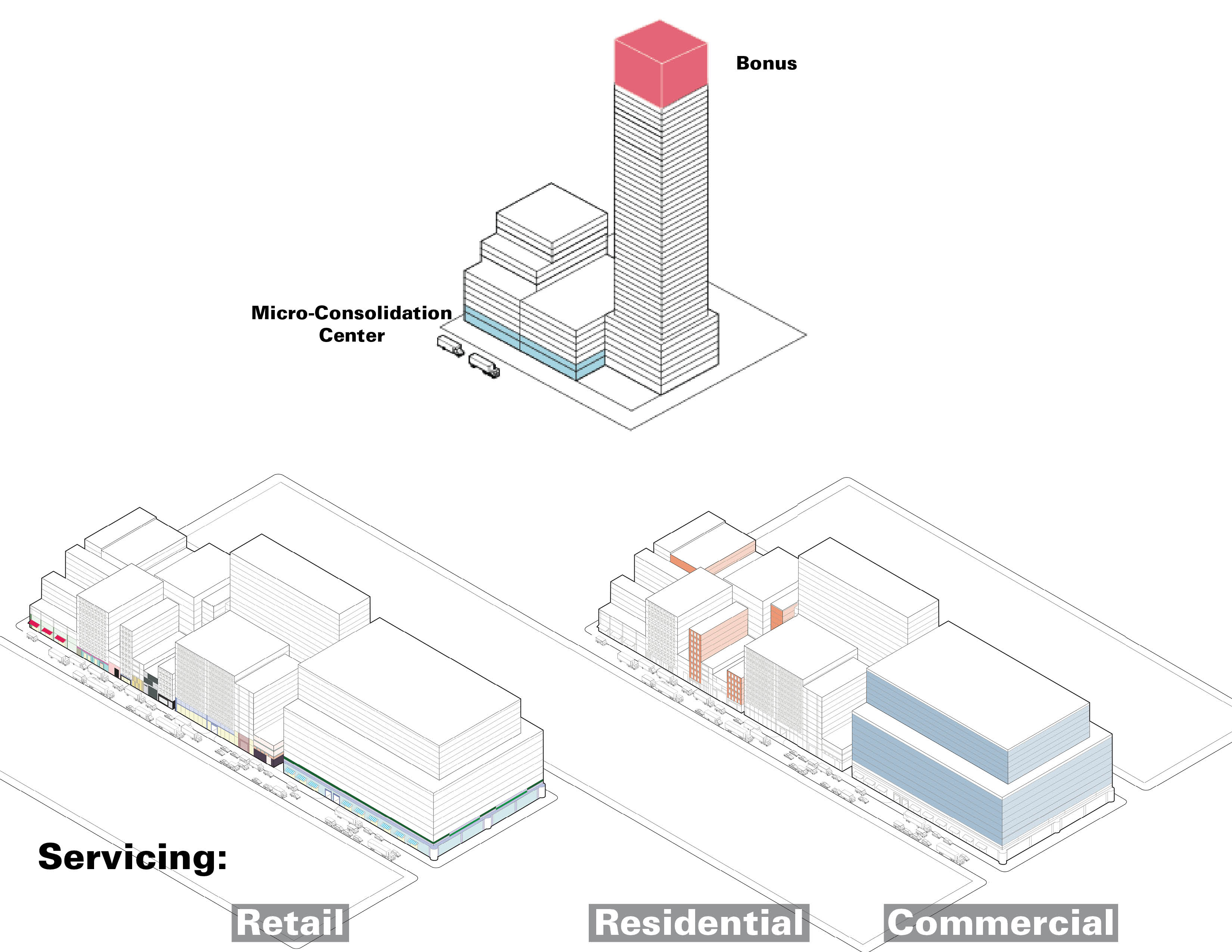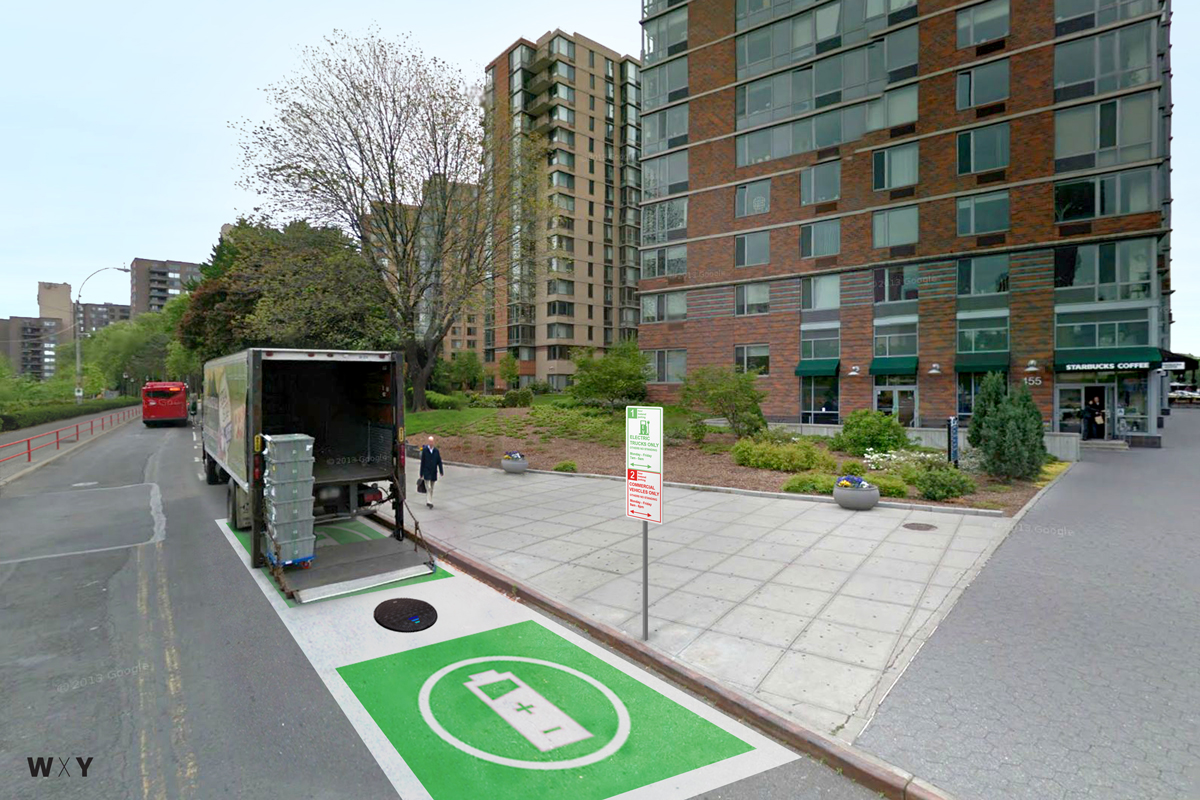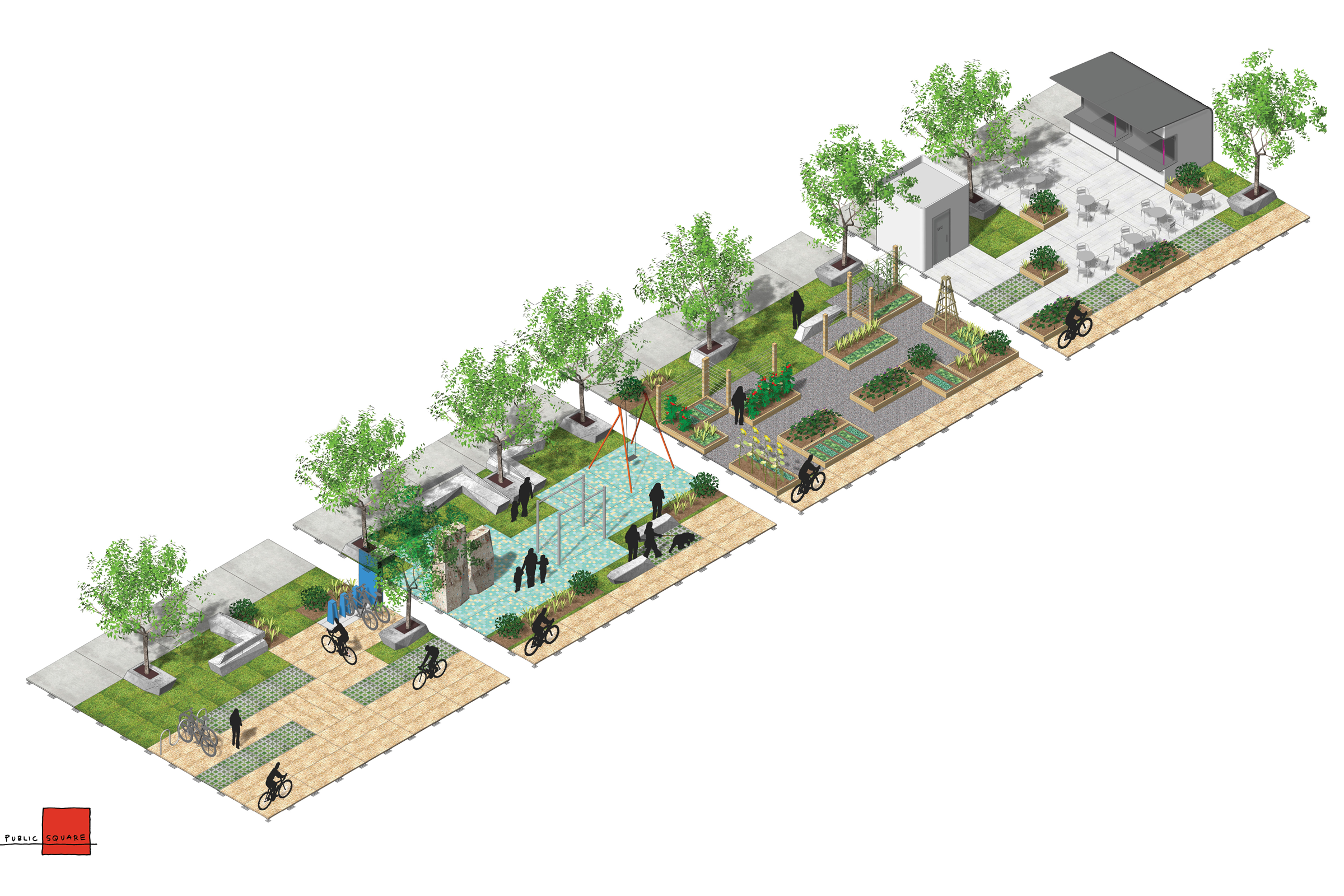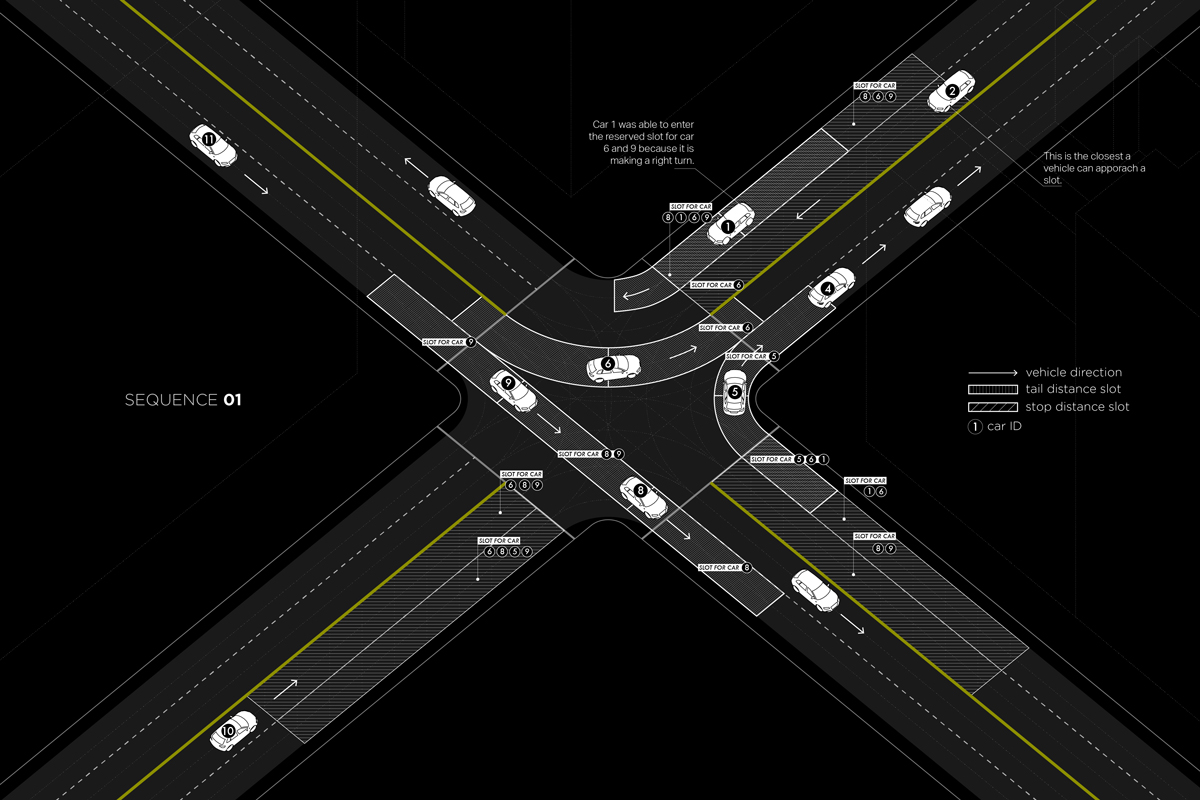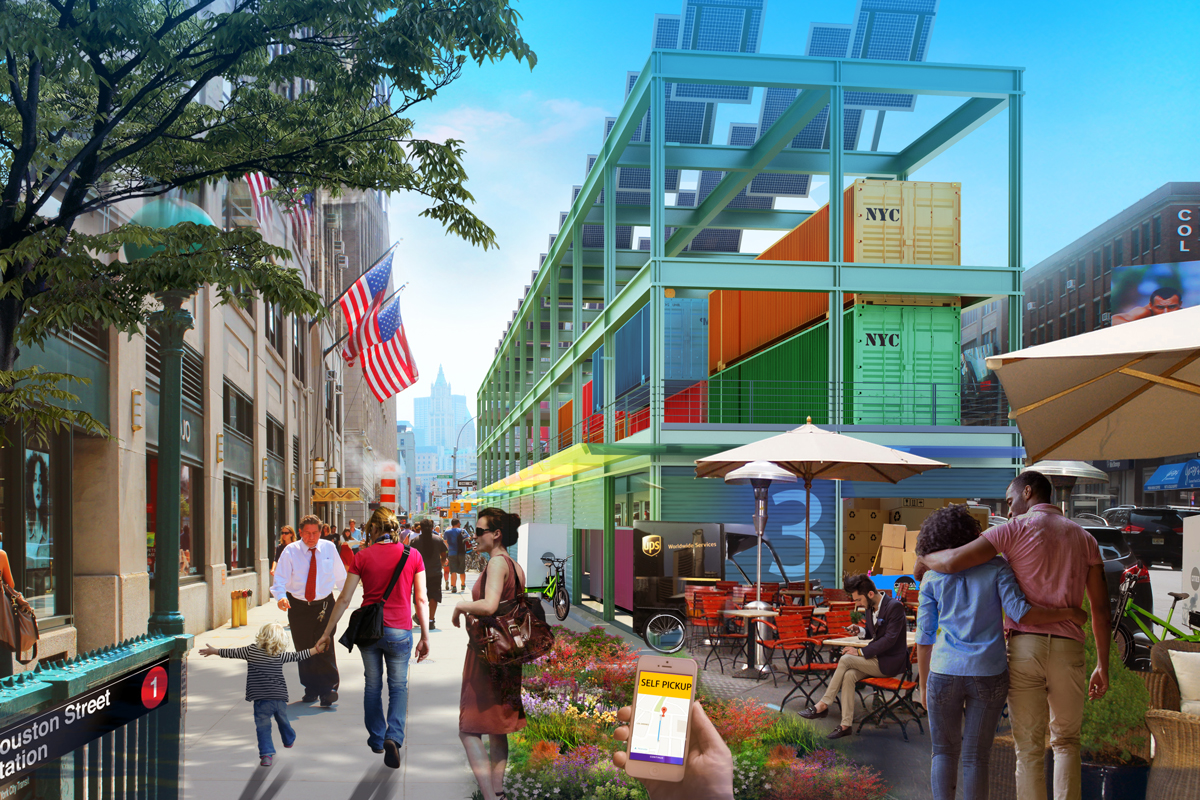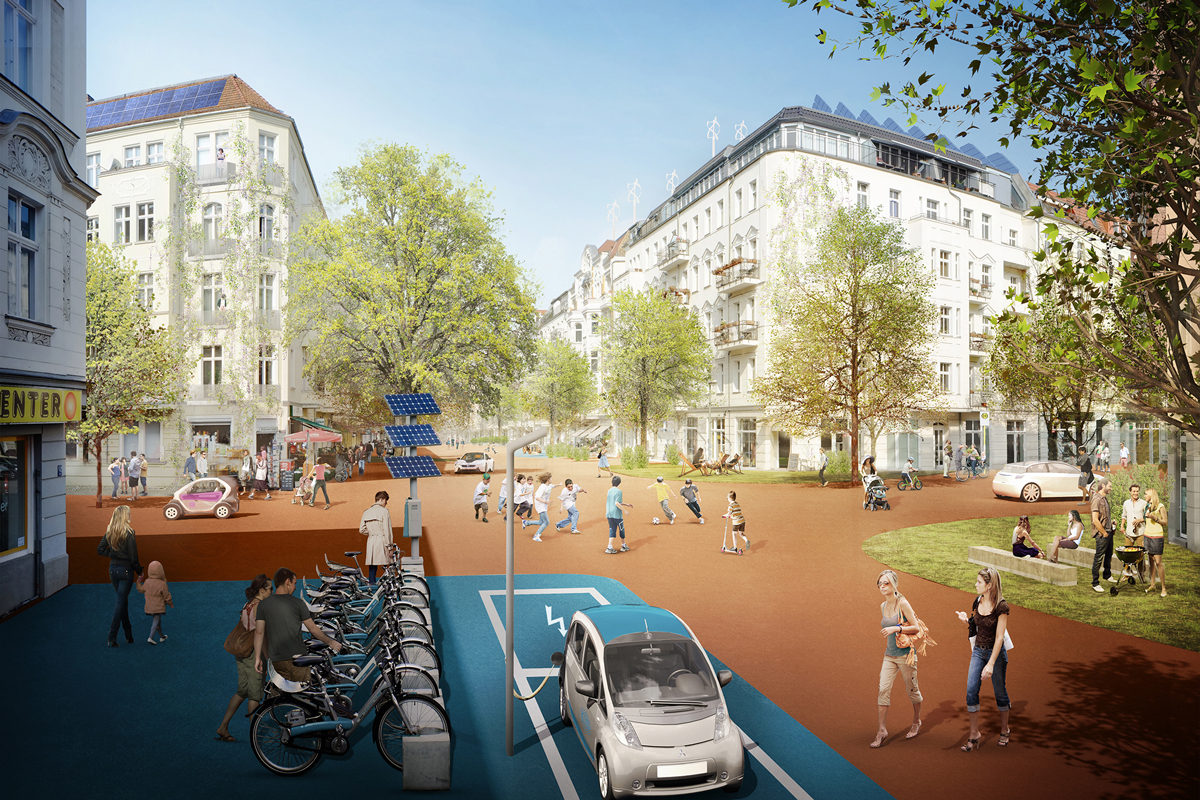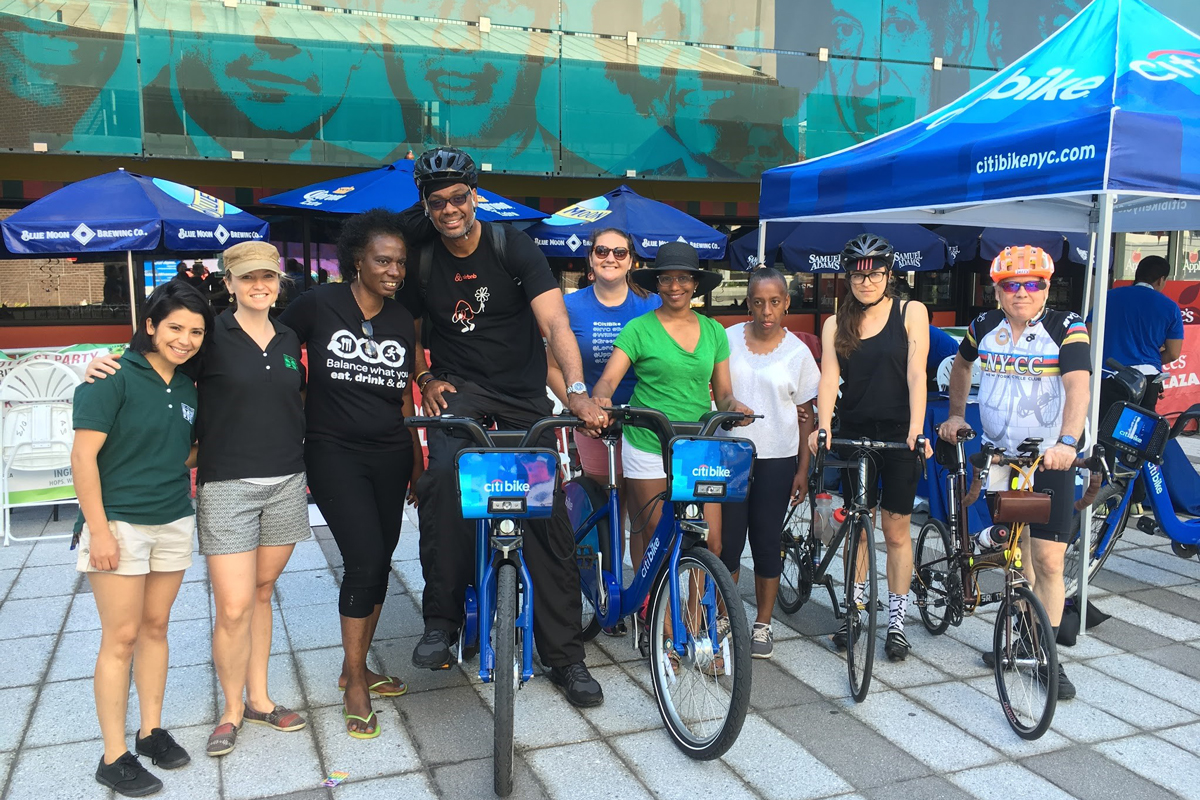Onward
Our century-old transportation infrastructure is aging and new digital technologies are revolutionizing the way we move through cities.
Overview
This year, the Urban Design Forum crafts a vision for the future of mobility in New York City. How would you build a more accessible, equitable, and sustainable city?
On May 14, the Urban Design Forum and the Institute for Public Knowledge launched Onward, featuring contributing authors Shin-pei Tsay, Rebecca Bailin, and Jeffrey Shumaker in conversation with Greg Lindsay and moderated by editor Daniel McPhee.
On November 7, the Urban Design Forum hosted its Fall Dinner, Momentum: New Mobility and the City. To celebrate our yearlong Onward initiative exploring new ideas to reimagine New York City’s streets and transit networks. we invited Jay Walder and Rohit Aggarwala to consider how new sensing, sharing, and cycling technologies are not only changing our streets but the city itself.
New York City’s subway system is suffering from rising infrastructure costs, declining investment and record overcrowding. Superstorm Sandy and the pending L-Train shutdown remind us that our aging transit system is vulnerable to climate change.
On June 15, the Urban Design Forum invited Tara Pham, Co-founder and CEO of CTY; Oliver Schaper, Practice Area Leader in Planning & Urban Design for Gensler’s North-East region; Sam Schwartz, President, and CEO of Sam Schwartz Engineering; Claire Weisz, Founding Principal at WXY architecture + urban design, and moderator Jill Lerner, Principal at Kohn Pedersen […]
On June 15, the Urban Design Forum invited Jill Morgenweck, Director of Regional Operations at Shyp; Makoto Okazaki, Partner and Principal Architect at Michael Sorkin Studio; Paul Salama, Zoning + GIS Lead at Envelope; Juliette Spertus, Co-founder of ClosedLoops; and moderator Greg Lindsay to debate the future of urban freight. Lindsay introduced the roundtable by […]
On May 25, the Urban Design Forum invited Kate Ascher, Partner at Buro Happold; Margaret Newman, Associate Principal at Arup; Paolo Santi, Research Scientist at MIT Senseable City Lab; and Catherine Seavitt, Principal of Catherine Seavitt Studio, to participate in our second roundtable on the future of transportation in New York City. After a brief […]
Join us April 25 for cocktails and conversation on the future of surface transit in New York. As New York’s population booms and subway construction costs skyrocket, city officials are turning to leaner solutions like bus rapid transit, bike share and ferry routes to move New Yorkers. But how can we connect the city’s burgeoning waterfront […]
In January 2016, the Urban Design Forum led a hard hat tour of the World Trade Center Transportation Hub led by Robert Eisenstat, Chief Architect of the Port Authority of New York & New Jersey. The $4 billion, Santiago Calatrava-designed hub will connect 11 different subway lines and serve an estimated 200,000 commuters each day. […]
New technologies are revolutionizing the way we move through cities. Car- and bike-share options are swaying more urbanites to ditch their cars. E-hail companies are enhancing ease and access across the five boroughs. Rapid delivery services are reducing trips to grocery stores and retailers. Autonomous cars and trucks are being tested on roads across America. How will these technologies shape our streets, transit networks, and public realm? Could private cars finally become obsolete?
On October 13, thirty Fellows of the Urban Design Forum participated in a members-only tour of the 7 Line extension and Hudson Yards construction site led by Beth Greenberg and Richard Dattner, Principals at Dattner; Shawn Kildare, Senior Vice President at MTA Capital Construction; Alexia Friend, Michael Van Valkenburgh Associates; and Michael Samuelian, Vice President […]
Instead of asking what kind of future transportation technology will bring us, we should ask: what kind of city do we want?
Posted — February 26, 2018
Our historic subway stations are our most used public spaces in the city. We should partner with the private sector to give our stations the innovation and investment they need to thrive.
Posted — February 26, 2018
Electric and driverless cars are on the way-it’s time to rethink our gas stations as new civic space.
Posted — February 26, 2018
Penn Station is a symbol of our city, yet now stands a neglected opportunity. It should be a shared civic space for us all!
Posted — February 26, 2018
We no longer need Broadway as a street. We should transform it into a linear park—a Green Line running through midtown Manhattan.
Posted — February 26, 2018
The Brooklyn neighborhood of Red Hook is notoriously difficult to access via public transit. Let’s explore new digital approaches to make the area’s transportation options visible to those who need them.
Posted — February 26, 2018
St. Nicholas Avenue today is a largely unnecessary traffic corridor. Imagine it as a 3/4-mile long park running through Upper Manhattan: Harlem Lane reborn.
Posted — February 26, 2018
Traditional green infrastructure hides the runoff it manages. Imagine if we celebrated our storm-water by growing the future of our streetscape!
Posted — February 26, 2018
The Broadway Malls could become a significant green corridor, integrating cutting-edge technology to provide a safe route for pedestrians, cyclists, and local wildlife.
Posted — February 26, 2018
Let’s expand the idea of the ‘street tree’ into a ‘street of trees’ to create a forest expressway.
Posted — February 26, 2018
The Brooklyn Strand should be a new gateway to the borough, connecting the waterfront with a series of parks, plazas, and greenways that will animate the thriving heart of Downtown Brooklyn!
Posted — February 26, 2018
We call for a (re) conceptualization of Complete Streets that humanizes “users” by acknowledging their difference and diversity.
Posted — February 26, 2018
The L shutdown is a once-in-a-generation opportunity to upgrade one of our busiest subway lines to meet the needs of the future. We should invest in our stations today.
Posted — February 26, 2018
Queens is New York City’s fastest growing borough, but it lacks the infrastructure it needs. We must support Queens’ expansion with smart, sustainable transportation.
Posted — February 26, 2018
Staten Island residents have serious transit inequities. To solve them, we must leave behind rails and roads and look to the sky with the SI Gondola.
Posted — February 26, 2018
When the L train shuts down, thousands will need an alternative to travel along 14th street. We propose the PeopleWay!
Posted — February 26, 2018
42nd street is a microcosm of New York. Imagine it as a grand passage, with light rail gliding through the heart of the city!
Posted — February 26, 2018
New neighborhoods are rising on the water’s edge, but lack reliable public transit. Let’s build the Brooklyn Queens Connector (BQX).
Posted — February 26, 2018
We are just a few miles away from becoming the most bike-friendly region in the country. Let’s get there by completing a continuous route around New York Harbor!
Posted — February 26, 2018
New York City must strengthen our existing transit system beyond the Manhattan core to catalyze the untapped potential for development in underserved neighborhoods. We should invest in new, next-generation, elevated transit—the Halo Line—to serve all New Yorkers and build a strong future.
Posted — February 26, 2018
A new subway line between Inwood and Orchard Beach would give residents and commuters the transit options they deserve.
Posted — February 26, 2018
We don’t just need new transit, we need a comprehensive strategy to achieve resilient community development and connectivity—the BQXL.
Posted — February 26, 2018
We’re headed for ‘bike-lock’ on the bridges to Manhattan. We need new capacity now.
Posted — February 26, 2018
The key to a more equitable New York is a new model for public transit—one that unlocks the potential for autonomous vehicles (AVs).
Posted — February 26, 2018
Disposing our waste is a wasteful process—it’s time we make it more efficient.
Posted — February 26, 2018
We need to rethink New York City’s transportation system to make it possible to get from anywhere to everywhere.
Posted — February 26, 2018
The L Train shutdown is the most significant transportation-related crisis to hit New York City in decades—and an unprecedented opportunity to solve subway overcrowding.
Posted — February 26, 2018
Few tasks are as fraught as envisioning the future, but the history of urban technology promises that the changes of the digital age are likely to be both profound and complex.
Posted — February 26, 2018
Private microtransit, in concert with congestion pricing and public Bus Rapid Transit, is the greatest opportunity to fix our bus crisis.
Posted — February 26, 2018
Public transit today is out of reach for the City’s poorest residents. Every New Yorker deserves a Fair Fare!
Posted — February 26, 2018
The buses that crawl down our streets today are not the service our city needs. Our buses should move at the speed of New York!
Posted — February 26, 2018
Paratransit today is managed inefficiently. It’s time to rethink how our future senior and disabled population will access their rides.
Posted — February 26, 2018
In the face of climate change and a lack of infrastructure investment, a comprehensive electric vehicle (EV) ecosystem can move New York City into the future!
Posted — February 26, 2018
New York City is one of the most pedestrian-dense cities in the world, yet approximately 80% of our public space—our streets—is designed for automobiles. We must reform our curbside parking policies to create a more livable city.
Posted — February 26, 2018
We don’t need every street to be ‘complete.’ We need a street network that works for everyone.
Posted — February 26, 2018
Zoning once facilitated the age of the automobile; today we can use it to enhance public transit.
Posted — February 26, 2018
The MTA is preparing to replace the MetroCard with a new mobile- and smartcard-based system. Now imagine it could be used for any transportation option, anywhere in the region—even driverless cars.
Posted — February 26, 2018
Freight is a planning afterthought, leaving our streets clogged with heavy vehicles. Why not consolidate deliveries at a neighborhood level to free up some space?
Posted — February 26, 2018
The growing volume of freight traffic in New York City has ramifications for residents’ health and the environment. It is time to adopt electric fleets.
Posted — February 26, 2018
With automated vehicles on the horizon, it’s time to envision the cities that will accommodate them.
Posted — February 26, 2018
Traffic lights were originally conceived for horse carriages. We need to reinvent them for the age of autonomous vehicles.
Posted — February 26, 2018
New York City can become environmentally self-sufficient if we repurpose and rebalance city streets and use the subway to deliver goods across the five boroughs.
Posted — February 26, 2018
As electric cars and the sharing economy become increasingly widespread, we have an opportunity to create a comprehensive mobility concept for New York City.
Posted — February 26, 2018
Traditional transit cannot serve the complex needs of our cities today. Bike share can help us build a more connected and equitable future.
Posted — February 26, 2018
